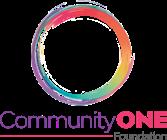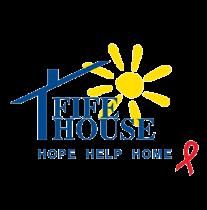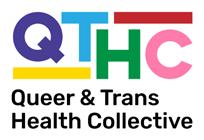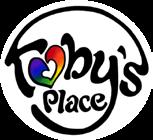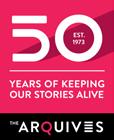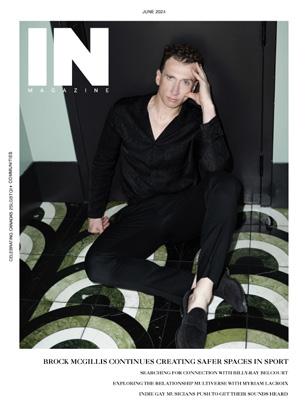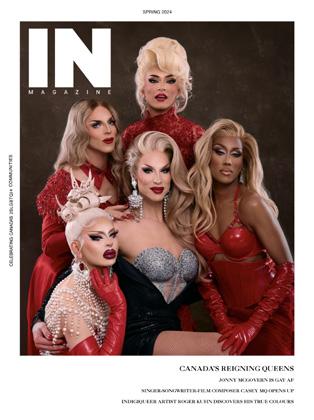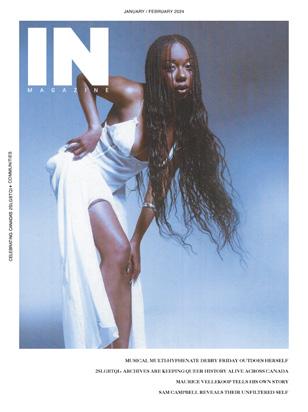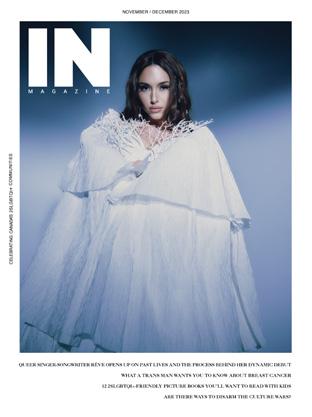
EVERLASTING ICON JODY WATLEY











PUBLISHER
Patricia Salib
EDITOR
Christopher Turner
ART DIRECTOR
Georges Sarkis
COPY EDITOR
Ruth Hanley
SENIOR COLUMNISTS
Paul Gallant, Doug Wallace
CONTRIBUTORS
Adriana Ermter, Shane Gallagher, Martin Grenier, Elio Iannacci, Karen Kwan, David-Elijah Nahmod, Stephan Petar, Ingrid Randoja
VICE PRESIDENT OF DEVELOPMENT
Benjamin Chafe
COMMUNITY RESOURCE NAVIGATOR
Tyra Blizzard
ADVERTISING & OTHER INQUIRIES (416) 800-4449 ext 100 benjamin@elevatemediagroup.co
EDITORIAL INQUIRIES (416) 800-4449 ext 201 editor@inmagazine.ca
IN Magazine is published six times per year by Elevate Media Group (https://elevatemediagroup.co). All rights reserved. Visit www.inmagazine.ca daily for 2SLGBTQI+ content.
180 John St, Suite #509, Toronto, Ontario, M5T 1X5

ON THE COVER: Jody Watley
PHOTOGRAPHER: Tyler Miles
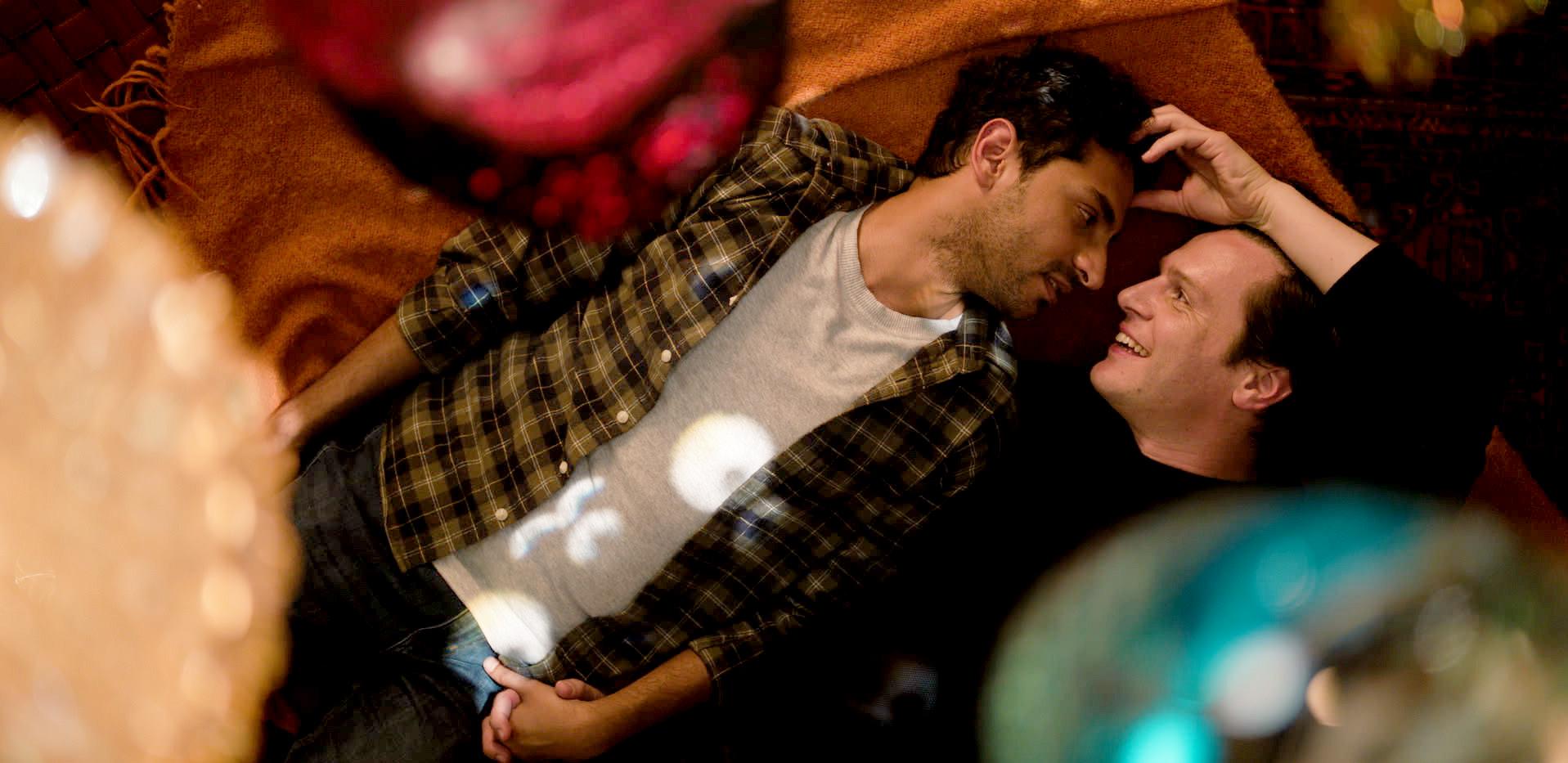
November / December 2024
INFRONT
06 | ACTING UP BY GOING GRASSROOTS
World AIDS Day offers a chance for communities around the world to join forces in an effort to end the HIV epidemic
08 | MY PROSTATE CANCER JOURNEY
About one in eight men will get prostate cancer in their lifetime. Prostate cancer isn’t more common in gay or bisexual men than in cisgender men, but you might have some concerns and you should know the signs. Here is one man’s story…
10 | THE WHY, HOW AND WTF OF ADULT ACNE
No one wants it and certainly no one likes seeing spots – but it happens, even when you’re an adult. So be in-the-know and be done with it
13 | DEAR DIARY
How journalling can boost your health –mentally and physically
15 | A VOICE FOR PEOPLE LIVING WITH HIV IN THE EAST AND SOUTHEAST ASIAN COMMUNITY
Three team members from ACAS, an organization serving this community, speak to IN about the challenges they face
FEATURES
16 | SHAWNEE KISH SHARES HER “FAVOURITE GIFT” THIS HOLIDAY
The multiple Juno Award-nominated singersongwriter releases her first-ever Christmas
single and discusses how her recently born daughter inspires her musically
18 | WHAT EXACTLY DO GAY MEN WANT FROM OUR DIVAS? IT’S NOT NECESSARILY RESPECT
Divas know what we want, and give us something different
20 | GIVING VOICE TO A TRANSGENDER MUSICAL ICON
Any Other Way: The Jackie Shane Story tells the story of Jackie Shane, who disappeared from the public eye almost as soon as she had taken over the spotlight
22 | JÉRÉMIE BATTAGLIA IS BOLDLY ADDRESSING MALE BEAUTY STANDARDS WITH ADONIS
Hard-hitting documentary tackles a controversial but increasingly alarming subject: young men’s obsession with getting the perfect body
24 | JP LAROCQUE TALKS ABOUT THE NEW TWEEN-TARGETED MURDOCH MYSTERIES SPINOFF
Macy Murdoch is a new series about a determined 16-year-old, the great-great-greatgranddaughter of famous police detective William Murdoch from the long-running CBC series
26 | EVERLASTING ICON
Jody Watley opens up on disrupting and diversifying the dance floor and the fashion world for more than four decades
34 | A STAR IS TORN
Actor/comedian/social media star Pete Zias on Total Trash Live, his scene-stealing role in the horror movie Ganymede, and his upcoming star turn in the play Messy White Gays
38 | JINKX MONSOON AND BENDELACREME ARE MAKING CHRISTMAS QUEER
The “queens of Christmas” talk to IN about the importance of creating a little holiday fun for the queer community
42 | 10 THINGS TO KNOW ABOUT TRANS ACTRESS KARLA SOFÍA GASCÓN, WHO COULD MAKE OSCAR HISTORY
If nominated, the Spanish actress would make history as the first openly trans actress to land an Oscar acting nod
44 | CROWNING BEAUTY
Miss International Queen will crown a new American pageant queen in Las Vegas this December. And that’s just one part of the dazzling five-day event
46 | ESCAPE THE COLD
Miami offers fun in the sun this winter
48 | PALM SPRINGS PANACHE
A quick spin through the Coachella Valley reveals Hollywood homes, desert oases, ghosttown quirk and sexy restaurants
52 | FLASHBACK: NOVEMBER 1, 1972 IN 2SLGBTQI+ HISTORY
Made-for-TV movie That Certain Summer airs on ABC

World AIDS Day offers a chance for communities around the world to join forces in an effort to end the HIV epidemic
December 1 is World AIDS Day – a day that brings global attention to the fight against HIV and AIDS, offering a chance to remember the lives lost while galvanizing efforts to confront the ongoing epidemic. In Canada, despite breakthroughs with HIV treatments, prevention efforts have fallen short. In 2022, new HIV diagnoses surged by 25 per cent, marking the most significant rise in over a decade, according to reports from the Public Health Agency of Canada. As the epidemic continues, communities across the country continue to face barriers that limit access to both HIV prevention and care.
“The reality is that HIV is still very prevalent here in Canada,” notes Alex Filiatrault, CANFAR’s Chief Executive Officer. With 28 per
cent of those living with HIV not receiving the care they need, efforts to close these gaps are more pressing than ever. Provincial discrepancies in new diagnoses – most notably in Saskatchewan and Manitoba – underscore the importance of World AIDS Day in driving awareness and collective action to combat this ongoing public health challenge.
History and significance
The first case of HIV was reported in 1981 and since then the virus has killed more than 40 million people, making it one of the deadliest pandemics in human history. Today close to 40 million people live with HIV.
World AIDS Day was first designated in August 1988 by James W. Bunn and Thomas Netter, to get some semblance of control over the pandemic that had claimed the lives of so many people, especially from the 2SLGBTQI+ community. Both Bunn and Netter were public information officers for the AIDS Global Program of the World Health Organization, and they conveyed their idea for the observation of this day to the director of the AIDS Global Program, Dr. Jonathan Mann, who approved it for December 1. It was the first-ever international global health day.
The theme of the first World AIDS Day focused on children, to steer away from stereotypes and discrimination, and to raise awareness of how HIV and AIDS affect families. As World AIDS Day grew, its organization was taken over by the Joint United Nations Programme on HIV/AIDS (UNAIDS) from 1996, and it became a year-round education campaign rather than a single awareness day.
Now, on December 1 each year, the United Nations, agencies, global governments and the public join together for the campaign, with awareness and fundraising efforts taking place all over the world. The reason? There is still a critical need for funds to support people living with HIV and AIDS, to raise awareness about what it’s like to live with the virus and to end the discrimination they face.
This year, CANFAR brings us back to the roots of HIV/AIDS advocacy with a renewed vision of the grassroots red ribbon campaign.
“This year, in collaboration with Gilead Sciences Canada, CANFAR is leading a national campaign that centres on bringing back the red ribbon,” says Roxanne Ma, CANFAR’s Vice President of National Awareness Programs. “The red ribbon was the first awareness ribbon designated for a public health cause, and we’re excited to reintroduce it in the fight against HIV/AIDS.”
The red ribbon became an international symbol for the epidemic in 1991. CANFAR was heavily involved in the original campaign and donation drives to help raise money for the cause.
“We want to bring the red ribbon back into the spotlight to remind people that HIV/AIDS is still a significant issue here in Canada,” says Ma. “In 2022, new HIV cases rose by 25 per cent compared to 2021 – the largest increase we’ve seen in decades. Our goal is not only to raise public awareness but also to highlight the progress made in HIV care over the past 40 years while continuing to address the stigma that persists.”
Ma hopes this symbolic public awareness campaign and the return to a grassroots direction in Canada will better equip community organizations to use World AIDS Day as a vehicle to raise muchneeded funds.
“Funding for community organizations in the HIV sector has been on the decline,” says Ma. “In recent years, several HIV/ AIDS community-based organizations across Canada have had to close due to a lack of renewed or sustained funding. A key part of this campaign is to engage these agencies and empower them to
activate their communities in fundraising efforts, ensuring local support for HIV/AIDS services.”
The return of the red ribbon campaign, with its iconic fundraising cans and activism posters, is made possible by the support of Gilead Sciences Canada, the presenting sponsor and a long-standing partner in the fight against HIV/AIDS.
“This marks our third year partnering with CANFAR on the national campaign, and we’re incredibly proud to support the many frontline organizations across Canada bringing attention to HIV and driving action,” said Paul Petrelli, Vice President and General Manager at Gilead Sciences Canada. “Our commitment remains focused on the people most affected by this epidemic –ensuring that every individual has access to the care and support they need. By staying true to this mission, we aim to help end the HIV epidemic for everyone, everywhere.”
You can show your solidarity with the millions of people affected by donating to a non-profit that works for HIV/AIDS awareness or by wearing a red ribbon to honour the millions of people who have been affected by the disease. CANFAR recommends using the following hashtags on social media to spread awareness: #WorldAIDSDay, #WAD2024 and #myredribbon.
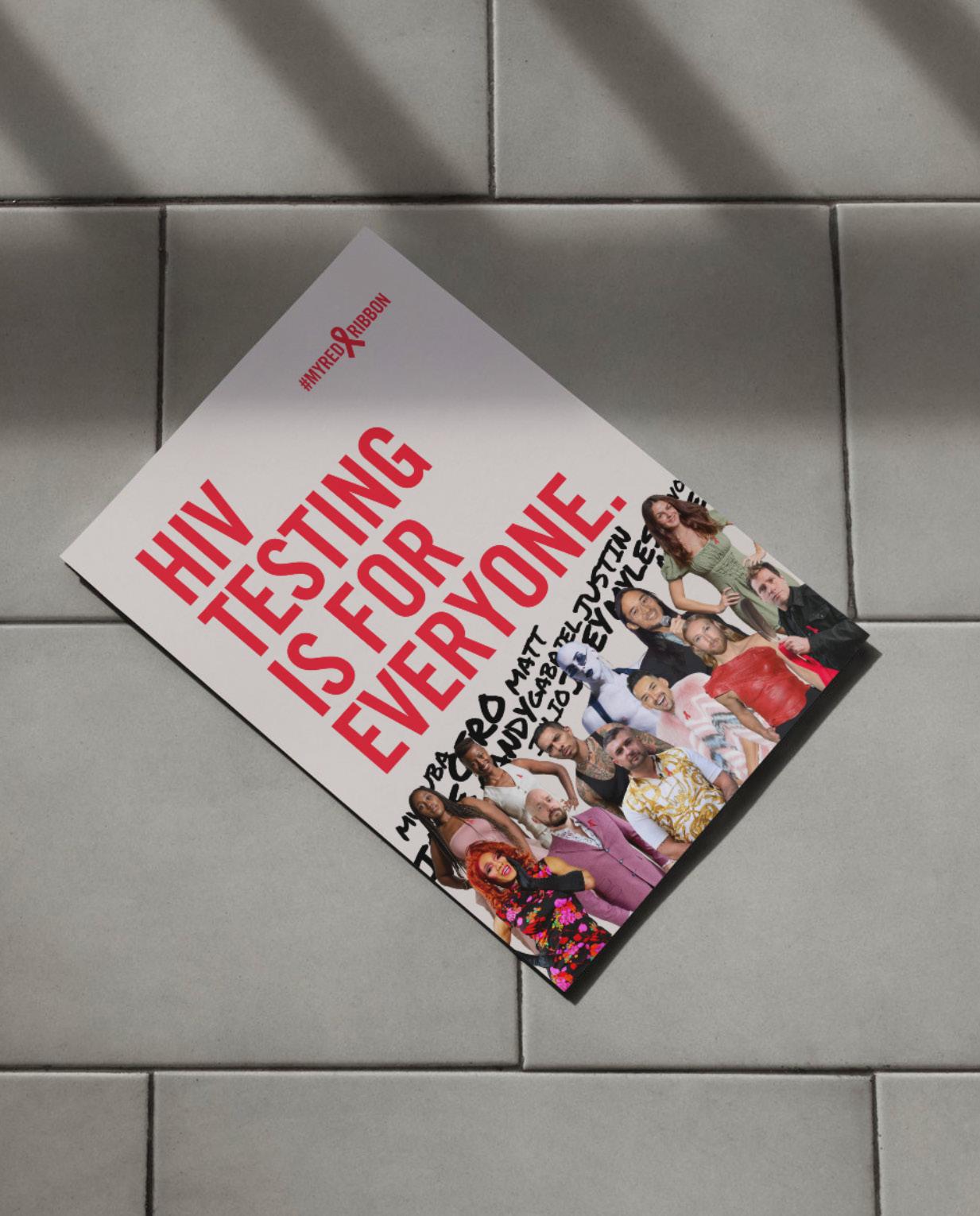
Get more information or learn more about the fight against HIV/AIDS at www.canfar.com, or follow CANFAR on Instagram at @canfar1987.
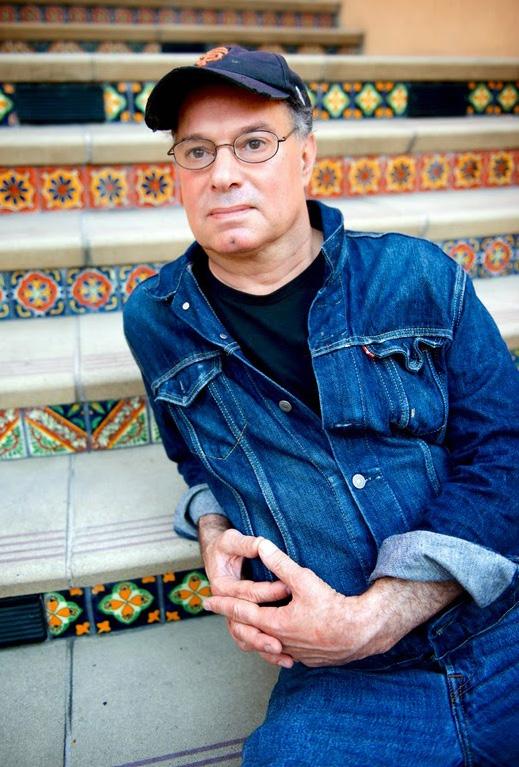
About one in eight men will get prostate cancer in their lifetime. Prostate cancer isn’t more common in gay or bisexual men than in cisgender men, but you might have some concerns and you should know the signs. Here is one man’s story…
By David-Elijah Nahmod
“We found some cancer,” said the doctor. My heart skipped a beat.
“Now don’t worry,” he continued. “The good news is that the cancer is Grade 1, the earliest stage. This stage is treatable.”
Well, that was a bit of a relief. But it’s still a shock to the system. It’s still cancer. I thought of all the relatives I’d had who had died of various types of cancer, especially my Uncle Joey, who had throat cancer. Uncle Joey was 38 when he died. He looked 80. Is that what was going to happen to me?
Mine is prostate cancer, a very common cancer among men in their 60s. I’m 68. “One in eight men will develop prostate cancer in their lifetime,” said Dr. John Lee, the San Francisco oncologist who’s going to perform my radiation treatments. “However, 60 per cent of the men diagnosed are over age 65, with the average age of diagnosis at age 67. Men under 40 have a very low rate of prostate cancer.”
I was told that I had three options. One was to not treat the illness and just have it observed. Grade 1 prostate cancer is very slow growing; it would take years to spread. I could easily live 10 to 15 years without treatment, according to Dr. Mikhail Regelman, the urologist who diagnosed me. In 15 years, I’d be 83. I immediately dismissed this option, as I didn’t want to end up like Uncle Joey.
My second option was surgery to remove the prostate, and my third option was six weeks of radiation. I chose the latter because it’s painless, non-invasive and requires no hospitalization. All I had to do was show up every afternoon for the treatments, which would each take five minutes. Other than that, I was able to live my life normally. Dr. Lee said that chances are 92 per cent that I’d be cured after the radiation treatments.
I found out that I have the disease through a simple blood test, a PSA test, done through my primary care physician each year.
“The PSA blood test is a measure of the amount of prostate cancer,” said Dr. Lee. “Normal prostate tissue produces a low level of PSA, 1.5–2 for those under 40 and up to 4.0 when 65. The lower the number, the more likely those patients are cured. Conversely, the higher number correlates with a worse outcome.”
My PSA level was 4.25, which meant there was a possibility of prostate cancer. My primary care doctor sent me to a urologist, who ordered a prostate MRI. The MRI showed a suspicious shadow on my prostate and so a biopsy was performed. The biopsy wasn’t fun. I was given local anesthesia in my butt. The doctor then proceeded to cut off tiny pieces of my prostate to send to the lab. Even with the anesthesia, this was painful, but it’s better to know and to get it treated.
Then all I had to do was get through my radiation treatments. My first treatment was August 22 and my last was on October 2, Monday through Friday. I had been told to expect side effects during the radiation treatments, and I’m thankful that my side effects were minimal. One of the side effects I was told to expect was fatigue, but I never once felt tired during the treatments. I did get a burning sensation when I urinated, which I asked Dr. Lee about.
He said this was normal during prostate radiation treatments and that the symptom will gradually clear up now that the treatments are behind me.
My next step is to get another PSA test to make sure the treatments worked. That will happen in December. Dr. Lee said that right now my prostate is inflamed from the treatments, which could elevate my PSA levels, possibly giving a false positive were the PSA test to be done now. In December, the inflammation will have healed and I’ll get an accurate reading. I’m hopeful and confident that the news will be good.
As I face this, I feel a sense of obligation to share my story so I can tell other men ages 60 and over, to get that PSA test every year. Remember, one man in eight will develop prostate cancer in their lifetime. If you’re the one, you want to catch it as early as possible. Catch it before it begins to spread and while it is still treatable. Catch it before it begins to impact your health.

Prostate cancer is the most common cancer among Canadian men (excluding non-melanoma skin cancers). It is the third leading cause of death from cancer in men in Canada. It is estimated that in 2024:
27,900 Canadian men will be diagnosed with prostate cancer. This represents 22% of all new cancer cases in men in 2024.
• 5,000 Canadian men will die from prostate cancer. This represents 11% of all cancer deaths in men in 2024.
• On average, 76 Canadian men will be diagnosed with prostate cancer every day.
On average, 14 Canadian men will die from prostate cancer every day.
For more information on prostate cancer, visit cancer.ca.
*Canadian Cancer Society
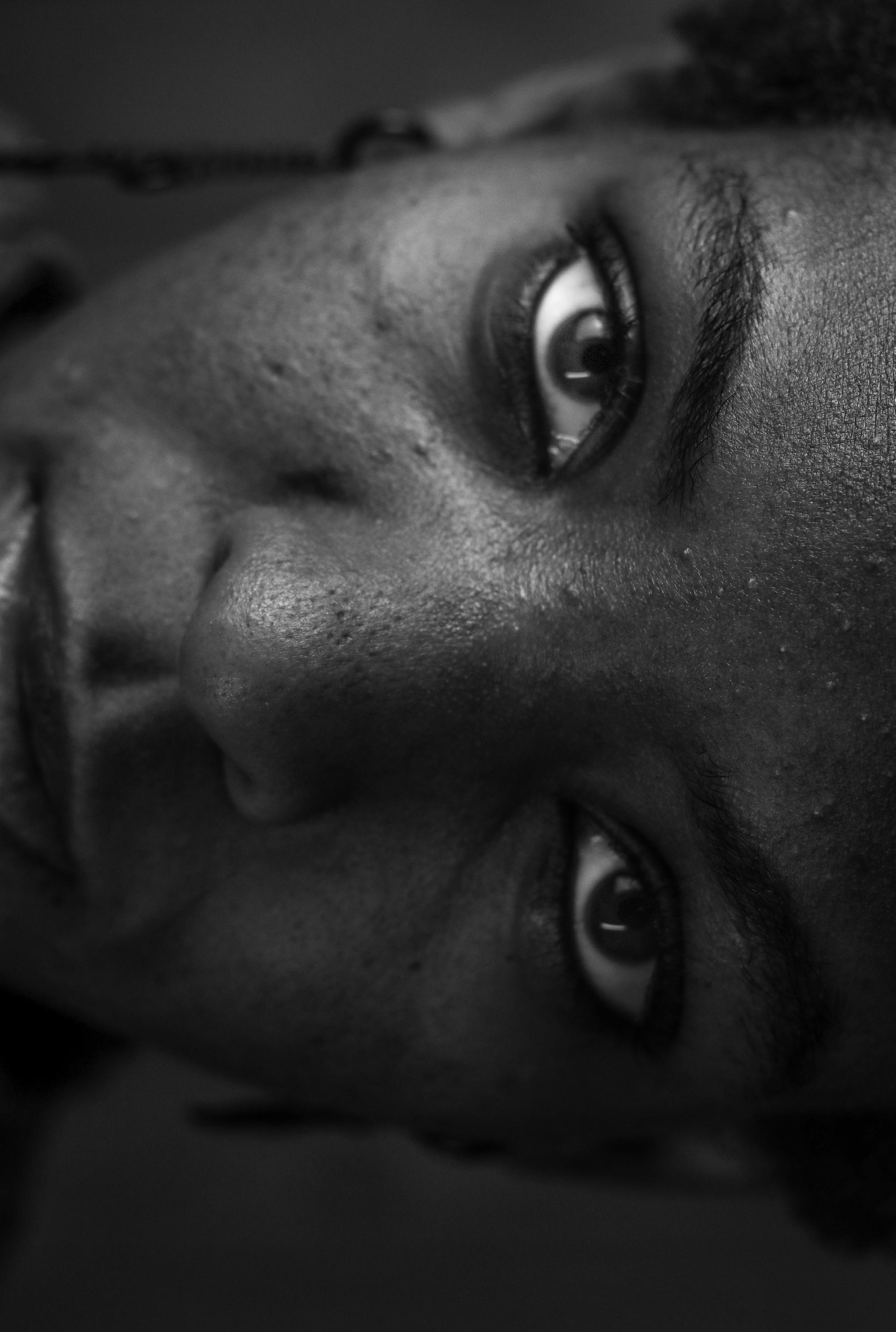
No one wants it and certainly no one likes seeing spots – but it happens, even when you’re an adult. So be in-the-know and be done with it
By Adriana Ermter
Zits, pimples, spots, blemishes, breakouts…the list of names for acne is long. While “pizza face” may not have been your personal experience growing up, it’s safe to say we’ve all lived through our own “zit-storm” at one point or another. You might even, quite possibly, be seeing spots now. That’s because, according to the Canadian Dermatology Association, acne affects 5.6 million Canadians each year. That number is literally parallel to the current population of British Columbia, or all of the people living in Saskatchewan, Manitoba, Nova Scotia, New Brunswick, Newfoundland and Prince Edward Island combined. And these stats aren’t just for the kids.
“You may feel like you are the only one struggling with skin issues that are normally associated with teenagers, but you are not alone,” affirms Canadian journalist, medical esthetician and author Denise Surette in her recently published book Skin Deep Beauty Bible: A Complete Guide to Adult Acne. “Adult acne is one of the most common issues I deal with as a medical esthetician.”
The rationale
Having a genetic predisposition isn’t the only reason why these skin imperfections can persist long after high school graduation. Even if you were pimple free as a teenager, multiple factors can lead to an adult breakout – from sweating through a CrossFit class, living in a smoggy city, eating a poor diet and stressing out about a work deadline, to dancing in heavy drag makeup and then overcleansing your face to wash off every layer of foundation, contour, highlighter and blush. While the Canadian Dermatology Association says women make up 75 per cent of all adult acne cases, men get blemishes too. “It’s all about the hormones,” explains Victoria Pedraza, the senior formulator for Montreal-based Groupe Marcelle Inc., producers of the new three-step Clari-T skincare line for adult skin. “The hormonal process is very integral [with adult skin imperfections], especially for women with monthly menstruation cycles and menopause. That, and a lack of hydration.”
The barrier
Unlike teenage skin, which is fuelled with excess sebum (face oil) to keep it hydrated, adult/aging skin isn’t so well lubricated thanks to years of wear and tear. Yes, adult skin has natural sebum. A research article in the Journal of Lipid Research states that our faces have approximately 900 sebaceous glands per square centimetre of skin, where sebum is produced before being released through the follicular ducts in our pores. The growing hairs then pull the oily substance up and onto the surface of our skin, where it forms a barrier to prevent water loss and keep our skin looking and feeling smooth, supple and plump. Or, at least, that’s what it did at a time when we had fewer lines around our eyes and weren’t
pining for our youth every time a Facebook “memory” popped up on our smartphone.
This older, drier version of our skin comes complete with a weakened epidermal barrier that’s vulnerable to producing blemishes. “That’s why it’s so important to hydrate the skin at the same time as when you have these imperfections,” says Pedraza, “to support the protective barrier with moisture and reduce sebum [for clearer looking skin].”
The solution
The hydration hero ingredient to look for in adult clarifying skincare brands (such as Mario Badescu, Murad, skinfix, Naturium and Marcelle’s product labels) is hyaluronic acid. A natural substance produced by the body, this skincare favourite helps add and lock moisture into the epidermis. But that’s not all. In a 2017 study published by the National Library of Medicine, hyaluronic acid was noted as helping control sebum production, making it beneficial for acne prevention. Add it to sodium pyrrolidone carboxylic acid (PCA), a humectant that increases the amount of water in the dermis and epidermis, and skin becomes stronger, more resilient and less prone to imperfections.
“For healing, preventing and improving the appearance of blemishes, look for salicylic acid,” advises Pedraza. “This is a gentle exfoliant that removes the impurities, the excess oil on the skin, and it won’t damage or block the pores.” The inclusion of niacinamide can help minimize the appearance of pores, calm redness and boost hydration. Ingredients like bakuchiol, a vegan antioxidant, can reduce the appearance of blemishes, improving skin’s texture and tone, while botanicals like lavender, chamomile and aloe vera soothe and calm inflammation and skin irritations. “These ingredients in [skincare] formulas perform,” adds Pedraza. “If we let blemishes persist, the impact on the epidermis may become chronic. Get into a good skincare routine. Take care of imperfections and blemishes as soon as possible to avoid infections, redness or further irritation.”
“Acne is an inflammatory skin condition and there are three types: comedonal acne, which presents mainly as blackheads and whiteheads; inflammatory acne, which is made up of pustules and papules and can also include blackheads and whiteheads; and cystic acne, which includes inflamed cysts and nodules, the type of pimples that are large, painful and do not come to a head,” writes Surette in her book. Here’s how to identify each unwanted spot:
1. Blackheads: small bumps with a dark or black centre
2. Cysts: very large, painful, soft red or white lumps filled with pus deep within the skin
3. Nodules: hard, inflamed bumps deep within the skin
4. Papules: small, sometimes painful, bumps beneath the skin’s surface that appear solid and raised
5. Pustules: large, sometimes painful, bumps filled with white or yellow pus
6. Whiteheads: small bumps with a white centre













How journalling can boost your health – mentally and physically
By Karen Kwan
On Instagram, it seems every wellness influencer has The FiveMinute Journal. Taylor Swift has been journalling since she was 13. Lizzo and Lady Gaga have both spoken about how journalling has helped them: Lizzo with self-acceptance and Lady Gaga with helping her process emotions. Matthew McConaughey has referred to writing in one, too. So journalling is undoubtedly popular – but are there health benefits to journalling, and should you add it to your own health routine?
The answer is yes. Research has shown that journalling can be great for your health, both physically and mentally. Does it matter whether you use pen and paper versus typing on your laptop? Of course, do what works best for you, but studies have shown that physically writing in a journal instead on tapping on a keyboard is good for you, given that handwriting your entries allows you to better process your thoughts, keeping your brain more active than it is when you type.
Here are seven different ways journalling can be good for your health:
1. HELPS YOU HEAL FASTER PHYSICALLY
Often we think of journalling as a way to provide a mental health boost, which it does – but several studies have shown that it also contributes to physical health benefits. A study conducted in New Zealand found that people who wrote about their feelings about an upsetting event healed faster after a biopsy compared to those who wrote about their day-to-day activities. Also, one research review found that journalling may be linked to lower blood pressure and fewer doctor visits for stress.
2. HELPS YOU GET OUT OF A NEGATIVE SPACE
It can be easy to spiral down into negative thinking when you’re stressed and worried. When you write down your thoughts in a journal, it has been shown to help you create some space from those thoughts and look at the situation in a more objective way.
3. BOOSTS YOUR IMMUNE SYSTEM
Writing your thoughts in a journal has been found to help by strengthening your immune system, lowering your chance of falling ill. Studies have shown that it can also help wounds heal faster and could help you better fight diseases including cancer and asthma.
4. HELPS ALLEVIATE ANXIETY
By writing down your thoughts and feelings, journalling can help you learn what triggers your anxiety and can contribute to helping you prevent feelings of anxiety. Journalling with a focus
on writing about what you’re grateful for has been shown to be beneficial for lifting your mood and reducing feelings of distress. It can also help prepare you to better handle stressful situations.
5. PROVIDES A CONFIDENCE BOOST
When you write down situations you’ve found challenging and how you worked through them, you can look back at these entries and realize what you’ve been able to accomplish. Similarly, when you write regularly in a journal, you have a log of your progress and how much growth you’ve made.
6. BOOSTS YOUR CREATIVITY
By jotting down your thoughts, journalling can help clear your mind and get your creative juices flowing. Think of it as a way to declutter your mind, enabling you to brainstorm and have space for new ideas. Also, when you journal in private on your own, it’s a safe space where there are no external pressures.
7. IMPROVES YOUR MEMORY
Research has shown that writing something down is like giving your brain notice that this is something that you want to remember. By practising journalling, you’re strengthening your brain’s ability to hold on to memories.


Three team members from ACAS, an organization serving this community, speak to IN about the challenges they face
Asian Community AIDS Services (ACAS) is a charitable, non-profit, community-based organization located in Toronto. It provides safer-sex education and services to the East and Southeast Asian communities as well as support services to persons living with HIV/AIDS (PLHIV) and members of the 2SLGBTQI+ communities. Its goal is to meet the needs and be the voice of the East and Southeast Asian community in Toronto.
ACAS began its work on World AIDS Day, December 1, 1994. Since then, with the support of organizations like ViiV Healthcare Canada, the organization has continued to organize concerted community efforts to help address some of the ongoing challenges faced year after year by the community.
To understand the breadth of the work that ACAS does, IN spoke with three different ACAS team members, who represent three different generations and roles within the organization.
What services does ACAS offer the community?
The core of ACAS has remained the same since 1994: we support people living with HIV. This looks like helping people overcome cultural, linguistic, stigma and resource barriers to health care. We provide referrals and translation services, we accompany people on medical appointments, and we help with income, housing, legal matters, and facilitate peer support and organize social activities.
How is ACAS adapting its programs to meet the ever-evolving needs of the community?
We stay in step with changes in the HIV epidemic. For example, we focus on education, prevention and treatment for groups at higher risk of HIV, like migrant farm workers and international students. These folks lack access to health care for many reasons, but we see them and include them in our community.
Despite rising infection rates seen across Canada, ACAS and other organizations are forced to operate in an environment where HIV/ AIDS is no longer as prominent in the public’s mind. What can ACAS do to help keep their vital work top of mind?
The way forward is to keep making the connection between HIV and structural inequities. That’s a conversation in civil society that people understand. I feel encouraged by that. Organizations like ACAS grew out of a social justice movement, and focusing on social justice is how we stay relevant, and get closer to ending HIV.
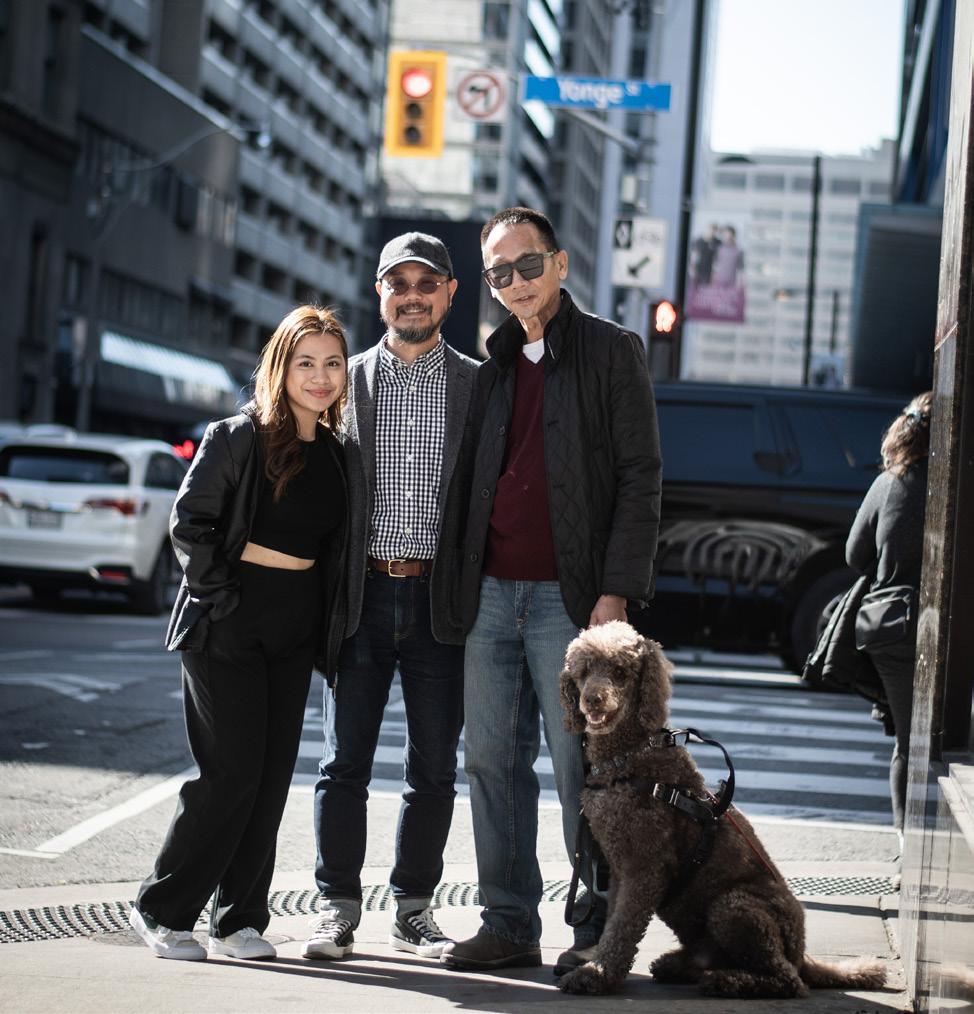
I wasn’t active in the early days of HIV/AIDS. What people tell me is that they basically did anything they could to help. There were no rules for how to do it. But today the movement has also become a ‘sector.’ There are a lot of rules. How can we hold on to those original values in a corporate, funding-driven environment? And the struggle for social justice keeps changing. For example, how do we reconcile volunteerism with decent work? We’re still envisioning the world we want and trying to build it. It’s rewarding work – and humbling.
Kenneth Poon, Health Promotion Coordinator
What are some specific barriers for PLHIV who are over the age of 50? People newly diagnosed with HIV can sometimes not be aware of the challenges and history of the HIV/AIDS movement. As AIDS service organizations (ASOs) focus more on people who use drugs, mental health concerns, youth, and settlement services, there are fewer services for people who have lived with HIV for many years. Aging PLHIV don’t always know where to seek services, or feel they don’t fit in with other generations or the communities that surround ASOs-which they have helped to build over decades.
What services is ACAS able to provide to support the aging HIV community?
Seventy-five per cent of our support clients are over 50 years old. We provide counselling, case management, educational workshops, social events and therapeutic care [massage and acupuncture]. We also provide educational workshops, from the latest HIV treatments to holistic health gear. More important, ACAS hosts many social gatherings for aging community members so they can increase social engagement and reduce social isolation. Many of our support clients don’t have any family members, and they tend to live alone with limited language skill to communicate in English, so our workshops and social gatherings always have peer translators and help create a strong sense of community.
Katherine Faith Evangelista, Intern (Student; Immigrants and Refugees – Social Services program at Seneca Polytechnic)
How does the new generation of social and community workers see the work?
The work is focused on innovation, inclusivity, empowerment and adaptability. We prioritize personal connections and strive to understand our clients’ unique backgrounds. Cultural awareness, with an anti-oppressive approach, and trauma-informed care are at the forefront of our practice, all delivered with empathy and a non-judgmental manner. I’ve gained valuable insights into the challenges clients face through my interactions with the staff and my classmates. This experience reinforced the significance of empathy in our work and deepened my understanding of clients’ needs and the impact of trauma on their lives. It shapes how we, the new generation, view our work.
What are your hopes for the future of HIV care?
I hope for improved access to HIV treatment and resources for everyone, along with reduced stigma that encourages individuals to seek help. Advancements in medical research are essential for effective treatments and a potential cure, while education on HIV prevention empowers communities. Throughout my nursing career, I’ve seen the harmful effects of stigma and how fear of judgment prevents individuals from seeking help. I envision stronger collaboration among healthcare providers, social and community workers to create holistic support systems that meet medical, emotional, physical and social needs. I also hope to combat misinformation and promote understanding, enhancing care quality and fostering a sense of belonging. Lastly, I hope for a future where individuals with HIV can live fulfilling lives free from discrimination, embracing compassion and understanding.
To learn more about ACAS and resources available to support PLHIV in the East and Southeast Asian communities, visit acas.org. To learn more about ViiV Healthcare Canada, visit www.viivhealthcare.ca.

By Stephan Petar
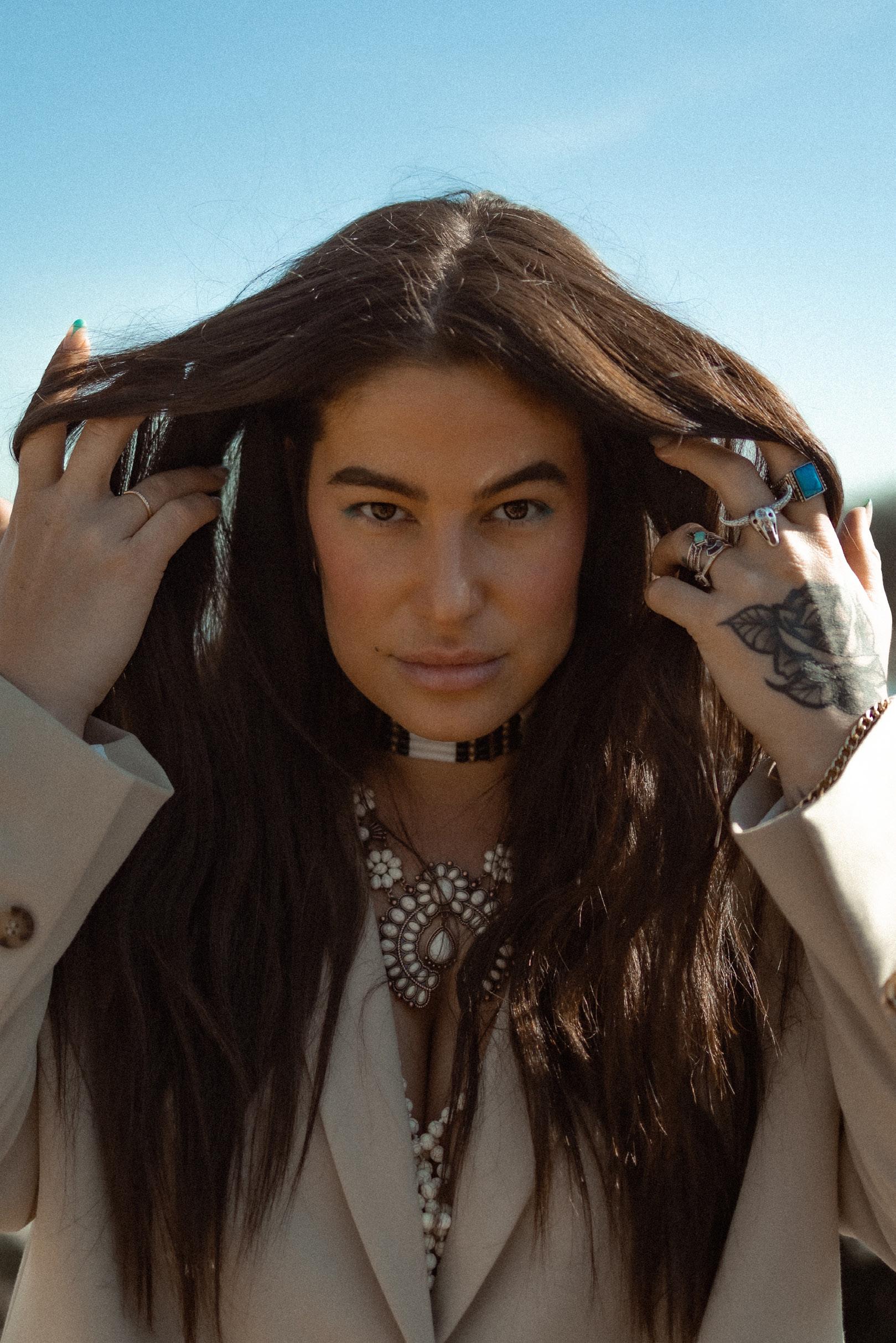

The multiple Juno Award-nominated singer-songwriter releases her first-ever Christmas single and discusses how her recently born daughter inspires her musically
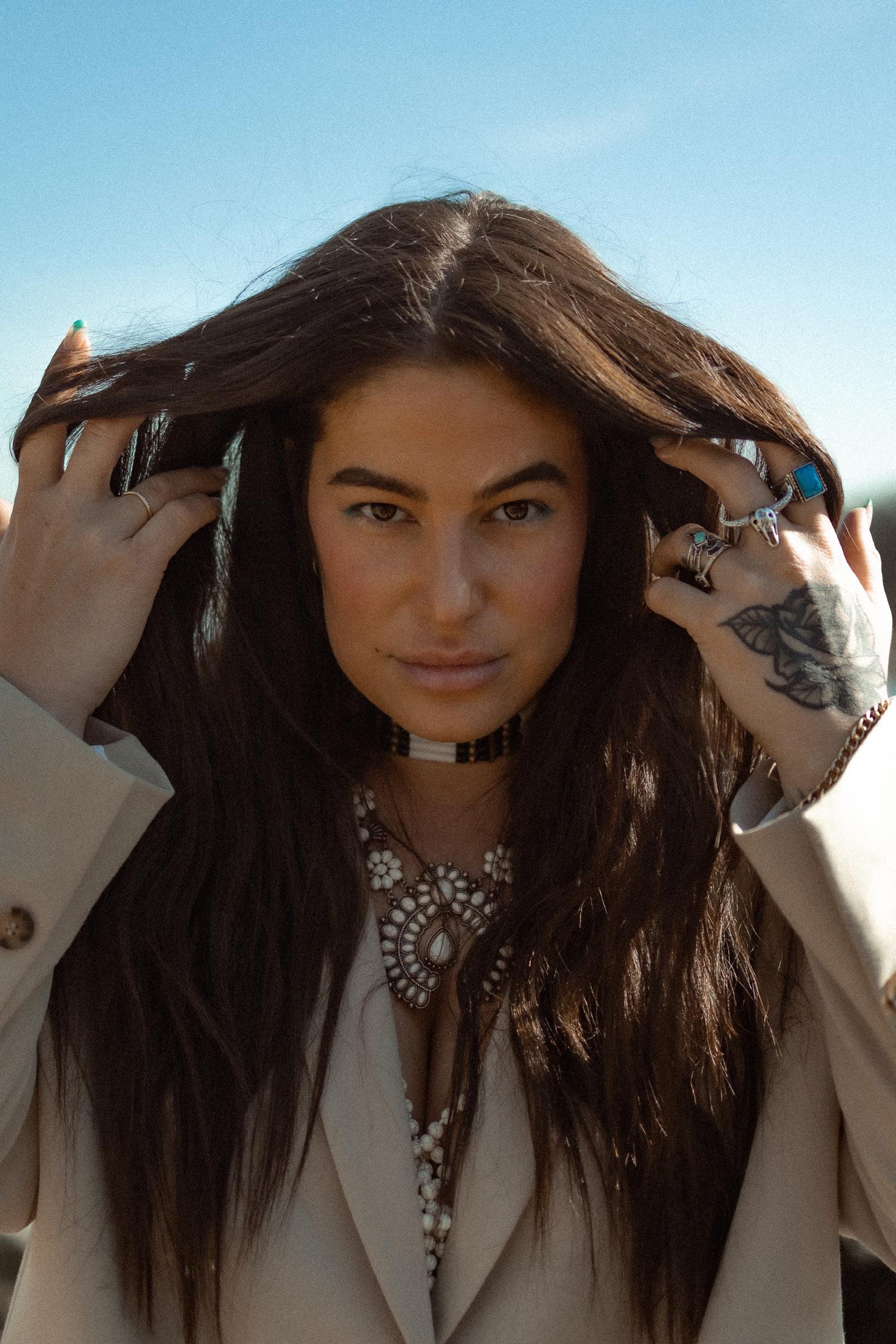
“Stockings by the fire.” “Endless candy canes.” These are the cozy holiday vignettes Mohawk singer-songwriter Shawnee Kish (she/ her) paints in her first-ever Christmas single “Favourite Gift.”
Listeners can stream the song starting November 15, and hear it live when Kish goes coast to coast as part of the CPKC Holiday Train in November and December 2024.
Kish has had quite a year. She became a new mother with her partner, Olympian Jen Kish; was nominated for two Juno Awards;
was named one of TikTok’s 2024 Visionary Voices; and has been releasing singles with her most personal and vulnerable lyrics yet. She also continues to be a fierce activist for the Indigenous and 2SLGBTQI+ communities, using her voice to uplift and heal.
We chatted with Kish about the inspiration behind her Christmas single, her evolution as an artist (which started as a Shania Twain impersonator), and how she’ll be celebrating her first Christmas with her daughter.
Tell us about ‘Favourite Gift’!
I’ve always shied away from Christmas songs. I have a chaotic and wild family, so Christmas has always come with the utmost chaos. A couple of years ago, when my wife and I first met, we ran away for Christmas with each other. So, Christmas has always been a funny time for me.
Since having my daughter, I’ve been thinking about Christmas, and am excited to experience it with her. I feel I’ve fallen in love with it all over again, like when I was a kid. Writing a song about it made so much sense. To have something for her to listen to, to have fun to, and that was celebrating her first Christmas.
Was there a Christmas song that inspired you?
I don’t know if there’s a specific song. I think ‘Santa Baby’ is cute and fun, and any upbeat kind of song. I knew I wanted it to represent all the things that I imagined for her – leaving cookies for Santa and seeing them nibbled on; her anticipating the morning and being excited; just building that atmosphere around her of things that I cannot wait to do with her, and see her eyes light up at. I wanted the song to represent that story. There’s a bit of soul in it and it’s just meant to be fun, something you can put on and dance to.
How did you first get into music? When did you realize this was your path?
I gravitated towards it as a young person. I started performing by accident as a Shania Twain impersonator when I was about 12. I loved that, and it kept me busy and it kept me working. I struggled in so many ways with my home and school life and not feeling like I could be me. Music was the one thing that gave me identity. I latched onto music for my survival and I’ve never let go of it. It developed over time and for different reasons, and it has meant different things to me, but once I discovered the power that it has for me, I’ve never let it go.
Your music spans various genres. Who influenced you musically, and is there a genre you gravitate towards?
It changes with me. I’ve changed so much since I’ve started writing music. From country to rock, there are so many different things that I can pull that I love and respect about each individual genre. I’ve explored different genres and different ways of singing, but I find the strength in my voice always remains in what I have to say and what my intentions are with sharing my story and my voice.
Those soul, R&B, blues women [e.g., Etta James] who can never be replaced are something I very much look up to and pull inspiration from. It felt like they did music for them. It wasn’t for a hit, it wasn’t for a team of people. It was for them.
Your song ‘Reclaim’ was released in August, and a press release noted your new body of work will be your most raw and vulnerable. How do you get to a place where you feel comfortable to share those personal stories?
Every opportunity I’ve had in my life, through struggle especially, has been a chance for me to look in the mirror and challenge myself to grow. Part of that is the healing journey of accepting me for me. I’ve spent a lot of time hiding me as an Indigenous person, as a two-spirit person, as a gay person. I’ve spent a lot of time covering
up all of those parts of myself, and it’s been this journey of reclaiming myself in all those ways and feeling enough confidence not only in a room, but in my music to be able to say these are the everyday things that my story has been filled with.
“ Every opportunity I’ve had in my life, through struggle especially, has been a chance for me to look in the mirror and challenge myself to grow.”
That part is scary: when it’s so close and it feels like there’s so much that could potentially come back and hurt you in some way. For me, it’s been this growing experience of learning that the things I’m scared of are the things I need to do, not only for myself, but for someone else who might need it. If I say I’m doing this because of the healing journey, then I have to be real and I have to be raw. If I’m not going to do it, I might as well pack up and go home. These past few years have been very challenging identity wise, and I feel I need to speak. What better way to do that than to share my story through music?
How has your daughter’s birth influenced your music? She’s definitely influenced my writing. I’ve been finding since she was born that I feel almost lighter. It’s like I’m looking at the world through her eyes. There’s so much that I want for her. I want her to be her, and it’s exciting, joyful, bright and beautiful. I feel this newfound peace and I feel settled in a way. She’s definitely influenced my writing in that way.
You were named a Visionary Voice by TikTok. What does that recognition mean to you?
The way I have never shared myself before, I get to on TikTok. The silliness, the goofiness, the fun, my relationship and my family dynamic. You get to see beyond my music. I get to share who I am.… I love being able to make people smile and feel good in their day. It gives me the opportunity to share the things that are important to me, that I’ve struggled with, and share my voice. It’s really cool to see how far I’ve come in my own journey.
I used to look up to someone like Melissa Etheridge who shared her stories. Now to be that person that people can go to and smile or learn about the things that I am…and empower, motivate and inspire people, it’s cool.
This is your daughter’s first holiday. Is there a holiday tradition you’re excited to start with her?
She’ll only be six months, but we’ll definitely decorate the Christmas tree. I think we’ll get her her own little Christmas ornament that she can put on the tree. I’ll help her, but next year, hopefully she can do it herself. And we’re definitely going to put cookies out.
You can follow Shawnee Kish on TikTok (@shawneekish), Instagram (@shawneekish) and on her website (shawneekish.com).
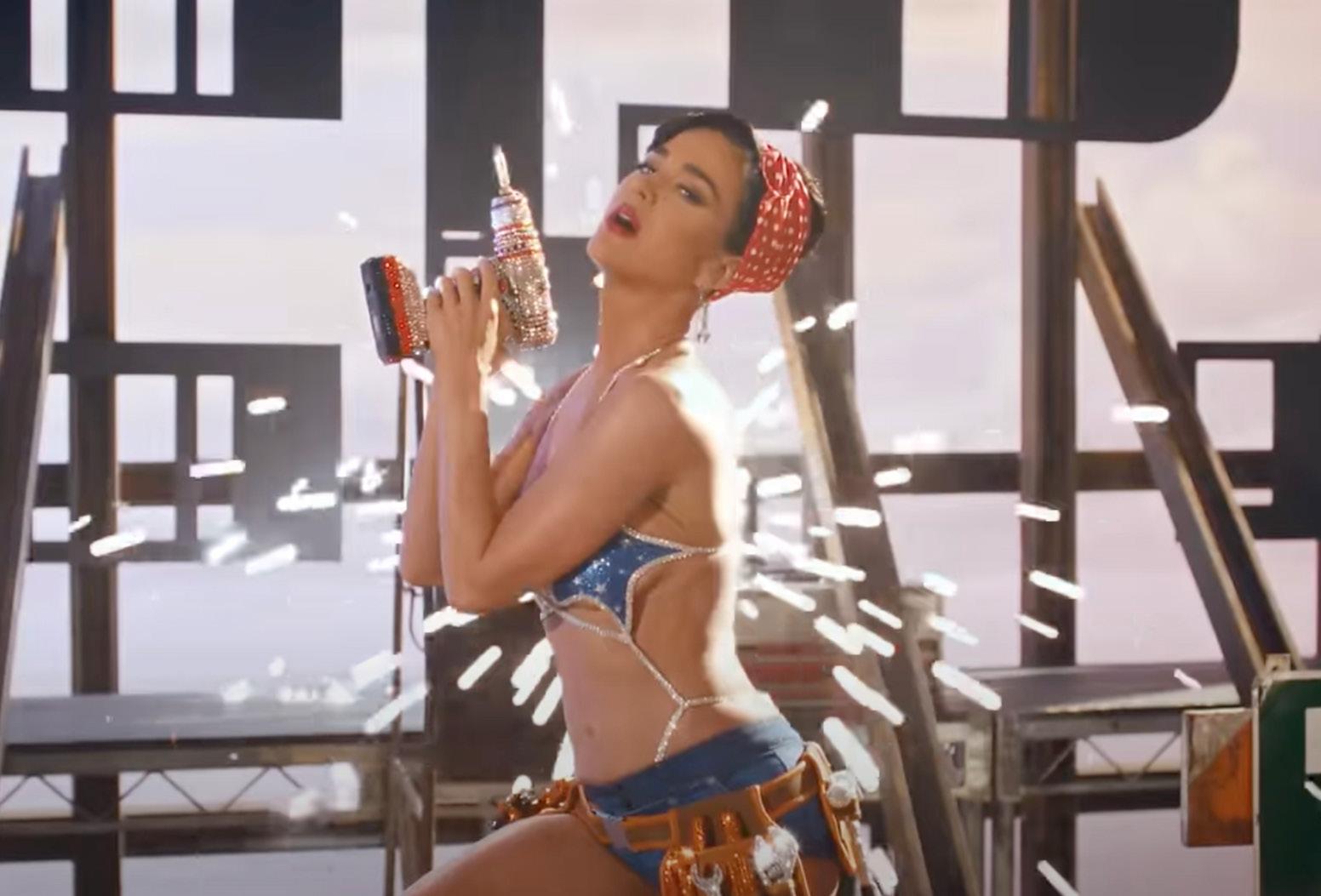
Divas know what we want, and give us something different
By Paul Gallant
Kylie is hot again. Katy bombed. No matter if Gaga now cares more about Hollywood than Billboard, her fans will never abandon her. Nor will Madonna’s, Shakira’s, Barbra’s. Rihanna is a big tease. Was Gwen, who has a new album out, ever a diva? Has Cardi B become one?
What does it even take to be a diva – to create an obsessive base of queer fans who will buy anything you release, crowd into your concerts no matter the ticket price, defend you against detractors and admit to your defects only among the most trusted fanatics (“Okay, sure, Hard Candy might have been a miss, but anyone who says anything about how Madge looks is a misguided troll.”)
When Katy Perry’s summer single “Women’s World” and its album 143 hit the charts dead on arrival earlier this year, many critics blamed it on politics and changing musical tastes. Katy had worked with Dr. Luke, whom Kesha had accused of abuse, and
the video for “Women’s World” seemed more like a celebration of female objectification than a critique of it. The whole project reminded people of how cringy the lyrics were that had made her famous with the queers back in 2008: “I kissed a girl just to try it / I hope my boyfriend don’t mind it.”
That might have hurt her with women, straights and non-binary people. But gay male fans rarely demand that their divas be politically astute. It’s nice if the singers they worship love them back, and have the right opinions, but it’s not a job requirement. Doja Cat has built up a strong queer following despite teenaged homophobic comments about Earl Sweatshirt and Tyler the Creator, which she followed with a halfhearted apology: “I don’t think I hate gay people. Gay is okay.” Allyship is optional, though active homophobia is a no-no. The reputation of the late Donna Summer remains tarnished because of comments she may or may not have made at a concert in 1983.
One of my favourite anecdotes in all of pop music history is when, back in the 1970s, the guys behind the band Chic, Nile Rodgers and Bernard Edwards, got an idea for a song after hanging out with a group of Diana Ross impersonators in the washroom of the New York trans club GG’s Barnum Room. Based on that night, the two straight guys wrote “I’m Coming Out” for Diana Ross, who was trying to reboot her career. Ross loved the song, but initially had no idea that it was queer content. “She didn’t understand that that was a gay thing, that that was a person saying, ‘I’m coming out of the closet,’” Rodgers has said in interviews. When told about the meaning of the song, Ross got nervous. She worried that it would sound like she herself was coming out – which would likely have been career suicide in 1980. But she recorded “I’m Coming Out” and released it as the second single of her new album, and it went to number five on the Billboard Hot 100. Ross remains an icon and a gay diva, if not in the contemporary top 10.
No, Katy Perry’s failure – for the gays, anyway – was not politics. It was two other flagrant violations of divahood.
The first infraction is trying too hard. Gay fans don’t expect divas to always be on the cutting edge (with one exception I’ll mention in a moment). But you can’t just run around the gay cliché candy shop gathering everything that you think will seduce us. “Women’s World” borrows melodically from Gaga’s “Stupid Love,” takes its chord progression from Madonna’s “Express Yourself” and echoes the lyrics of Shania Twain’s “She’s Not Just a Pretty Face.” You can’t take other divas’ greatest hits and make a hit out of it – and Gaga had already stolen “Express Yourself” for “Born This Way.”
Sure, the gays still shriek when the 1991 Crystal Waters club hit, “Gypsy Woman (She’s Homeless)” comes on, just like we’ll love anything that sounds like Robin S.’s 1993 “Show Me Love.” But don’t marry these sounds, as Perry does in “I’m His, He’s Mine,” to desperate and possessive straightness: “I’m every woman he knows exists / I’m his main, I’m his side / I’m every woman that’s in his mind.” And the whole point of using classic house beats is to put something completely fresh over them, as Kiesza did in 2014’s “Hideaway.”
Our favourite divas always hold something back. Madonna’s “I’m not sorry – take it or leave it” attitude may alienate her from some potential fans, but it makes gay men want to be her. We envy the power to be aloof. We all want the power to be Barbra, hiding away from public view until we are ready to give to the world exactly what we want to give to the world – and not what the world wants from us. What do we know about Beyoncé? Only what Beyoncé wants us to know about Beyoncé. She gives us glimpses of her thoughts and feelings exclusively through art, and even then she doesn’t overexplain what her art is doing and where it’s going next (except maybe in all the credits she gives to those who contribute to and influence her music). If Beyoncé’s next album was a mashup of Czech polka music and Mexican huapango, the gays would say they love the new direction – declare that it proves her genius – even before they googled “huapango.”
Divas know what we want, and give us something different. They teach us something new to want and then, next time out, give us another new thing. Rihanna is probably more of a diva now – nine
years into punishing us by withholding a new album – than she was in 2016 when Anti came out. Her silence elevated her diva quality. Whenever R9 comes out, and whatever it sounds like, gay men will be the first to stream it on repeat.
“No, Katy Perry’s failure –for the gays, anyway –was not politics. It was two other flagrant violations of divahood.”
This takes us to the second infraction. Reinvention is a necessity. If Madonna is the favourite diva of so many gay men of a certain age, it’s mostly because reinvention is built into her brand. Until things started to smear in her later career, every album, every concert had some twist, a layer added or removed, a genre embraced or at least dabbled with. While sexuality has been at the core of Madonna legend, her take on sex has ranged from coquettish to whorish to sentimental to vampish to queer. Cher went from variety-show host to rocker chick to club-music queen to movie star to self-satirist over her 50-year career. Any day now, she’ll start doing installation art.
The demand for reinvention has been tricky for an artist like Kylie, who established herself as a pixie-like dancefloor diva and stayed in that lane for most of her career. Kylie’s country-ish Golden, released in 2018, was one of her weakest-selling albums, though 2020’s Disco, which was a supersized version of her disco pixie brand, didn’t do well either. It’s a weird balance. Zigging in an uncommitted trend-following way can hurt you, but leaning too hard into the established brand can leave fans bored. Why we love an artist should be understood – calling attention to it seems crass. “Padam Padam,” released in 2023, was a brilliant and subtle restatement of purpose for Kylie. Ideally, her image and genre should remain somewhat constant – it’s the musical production, the sonic texture that she’s an expert at reinventing. The woozy whispers of “Padam Padam” seemed subversive and just the right kind of silly.
Silliness is the opposite of trying too hard. But then again, trying too hard can also be silly. While Gaga’s 2013 album, Artpop , seemed pretentious and indulgent when it was first released, the passage of time has made it seem pleasantly ludicrous. Artpop might be trying too hard (infraction number one) but in a way that’s unhinged, and so endearing. (See also: The #FreeBritney movement.)
What we’re looking for in a diva isn’t someone who’s our best friend, someone who gives us validation. A true diva is someone who shows us how to follow a singular path without apology –and then, when the straight people aren’t looking, gives us a knowing wink.

Any Other Way: The Jackie Shane Story, a new documentary from filmmakers Michael Mabbott and Lucah Rosenberg-Lee, tells the story of Jackie Shane, who disappeared from the public eye almost as soon as she had taken over the spotlight
By Ingrid Randoja

The first time filmmaker Michael Mabbott heard Jackie Shane’s voice, it was a bootleg recording of the R&B singer, who had made a name for herself performing in Toronto clubs throughout the late 1960s. The moment he heard her sing, he was hooked.
“Her voice, the band, it was just extraordinary,” says Mabbott. “It was one of those albums that speaks to you, and when I did some digging and found nothing but rumours about what had happened to Jackie, I just felt compelled to find out who this was and what happened to her.”
That search, which began more than a decade ago, inspired the extraordinary documentary Any Other Way: The Jackie Shane Story, which shines a spotlight on Shane’s music and her life as a Black, openly trans woman who left her Nashville home to carve out an all-too-brief musical career north of the border.
Mabbott joined forces with fellow filmmaker Lucah RosenbergLee to tell Shane’s story. “I first heard about Jackie from Michael,” says Rosenberg-Lee, “and I was a bit surprised because being a Black trans person myself, I thought I knew a lot about the history. But I think it just generally speaks to the erasure of this history, which is obviously part of what we explore in the film.”
One of the challenges facing the team was that the only existing footage they could find was a single two-minute video clip of Shane performing live. But they did have Shane’s live albums, and after Mabbott contacted Shane in 2017, he began recording their phone conversations.
“We spoke every week for four or five hours on average, and 11 hours straight was our record. It was a really remarkable year of my life,” says Mabbott.


The film employs Black trans actors to portray Shane singing and speaking on the phone. Their performances are then heightened with the use of beautiful rotoscope animation that gives the film a dreamy quality. It all works together to paint a portrait of a pioneering musical icon.
“I think it’s really important for people to see that trans people have always been here,” says Rosenberg-Lee. “And I think it’s important to see that trans people are more than their transness. What’s so interesting to me about Jackie’s life is that not only was she trans, but she was all these other things – an incredible musician, someone who was powerful not just because she transitioned, but because she was a strong person who did some incredible things.”
Any Other Way: The Jackie Shane Story won the DGC Special Jury Prize – Canadian Feature Documentary at the 2024 Hot Docs festival, inspiring audiences and critics alike.
“Jackie’s story is about overcoming fear,” says Mabbott. “Jackie talked a lot about how evil in the world, at its root, was caused by people who were afraid, and that’s what needed to be fought. And that’s what Jackie worked tirelessly on when she was on stage, to be an example of overcoming your fear, having the strength and courage to be yourself.”
Any Other Way: The Jackie Shane Story from directors Michael Mabbott and Lucah Rosenberg-Lee is set to premiere on Crave later this year.

His hard-hitting documentary tackles a controversial but increasingly alarming subject: young men’s obsession with getting the perfect body
By Martin Grenier
Few documentaries have fuelled conversations this past year quite like Adonis, a Télé-Québec documentary about young men’s obsession with getting the perfect body. For that, we can thank Jérémie Battaglia, a 41-year-old filmmaker from the South of France who has called Quebec home since 2009. Battaglia, cofounder of the Extérieur Jour production studio, has long been interested in the body’s relationship with performance, feelings of inadequacy and peer pressure, and in Adonis he investigates this issue.
The premise for Adonis is based on Battaglia’s own experience. Bullied at school, he resorted to the weight room to become more imposing. While the director generally avoids putting himself in his films, his story was a great way to gain the trust of his subjects and alleviate any concerns they might have had of being judged.
“It’s the first time I’ve ever heard young men that age speak out like this,” Battaglia says. “What I realized in talking about men is that we tend to first and foremost talk about problems caused by men. These young men feel that the only time we actually talk about them is when they’re making trouble or being violent. The documentary allowed them to open up about who they are and how they feel in their own words. I think that’s another reason it’s had such a big impact.”
Battaglia finds it disturbing that few male artists are interested in the well-being of young men, especially considering social media’s wildly disproportionate influence – a danger the documentary highlights as a major concern. He’s particularly taken aback by the gap between the real lives of the young men Adonis follows and the image they project online.
Fortunately, Battaglia had an ace up his sleeve when it came to helping the men in his film see the difference between the two:
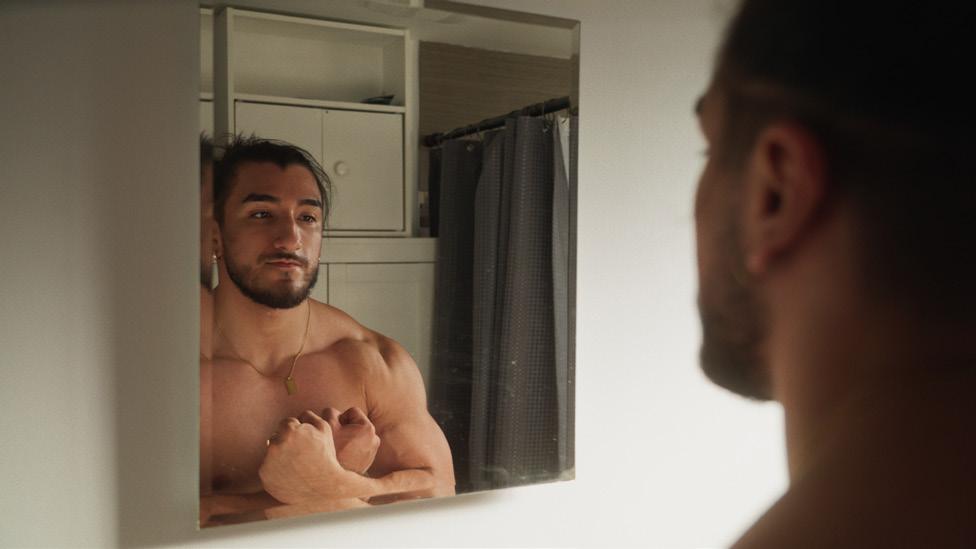
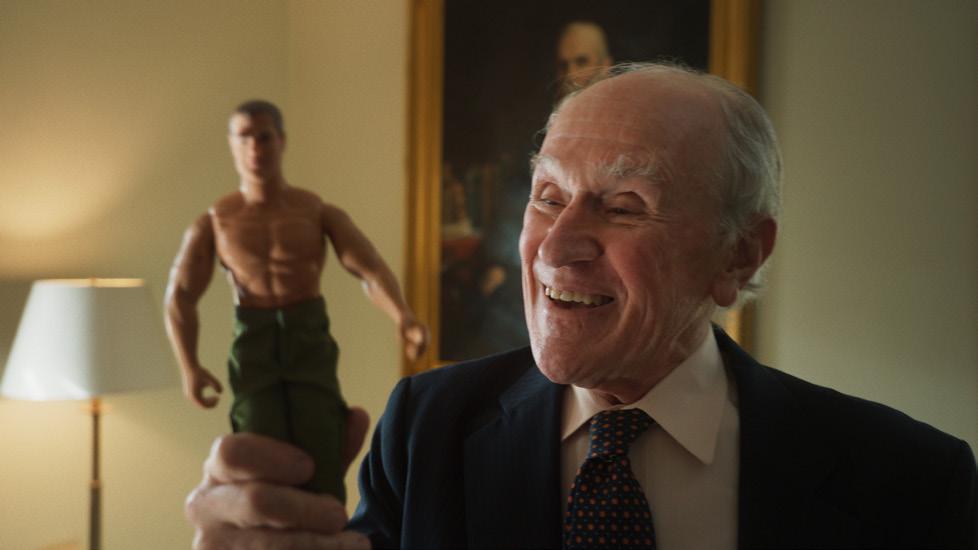


time. Thanks to support from Télé-Québec and other organizations, including the Canada Media Fund, he was able to devote 20 shooting days to the project, a rare opportunity for any documentary.
“It makes a huge difference, especially on TV projects,” he says. “It gives you the leeway to develop a strong auteur approach, with a compelling directing perspective to present the subject in a way the audience hasn’t seen or thought about before. Typically, you’re lucky to get a total of eight days. In this case, I was able to take four full days for the on-camera interviews alone. The difference is like day and night.”
Battaglia can devote years to a single project. That’s the case for his upcoming documentary film, Une jeunesse française (A French Youth), shot over five years with young men from the Maghreb (central/northern Africa) now living in the Camargue region of France. Part of the 2024 Hot Docs Official Selection, it’s set for theatrical release this fall.
With Adonis picking up five nominations for the Gémeaux Awards (which honour French-language work in Canadian TV and digital media), Battaglia is already working on another documentary for Télé-Québec. And, as always, he has others on the drawing board. When the world is your source of inspiration, you can never run out of ideas.
“The fascinating thing about documentaries is that they give us access to lives and ways of seeing things we could never have had otherwise,” Battaglia says. “The very essence of the documentary is, of course, providing a factual record of what’s happening in the world around us. Being able to put myself in someone else’s shoes and understand life from their point of view, is an opportunity just too good to pass up.”

Macy Murdoch is a new series about a determined 16-year-old who just happens to be the great-great-great-granddaughter of famous police detective William Murdoch from the long-running CBC series Murdoch Mysteries
By Ingrid Randoja
It was a challenge JP Larocque couldn’t refuse.
“Paige Haight, the director of television at Shaftesbury, approached me and said, ‘Hey, we really like your writing; curious if you have any interest in sending along some ideas about a spinoff for the Murdoch Mysteries franchise, but in the kids’ space,’” recalls Larocque, who’s on the line with us from their Toronto home.
It made sense. Larocque has established themselves as one of Canada’s best television writers, working on shows such as Sort Of, Diggstown and Coroner, and creating the comedy series Gay Nerds
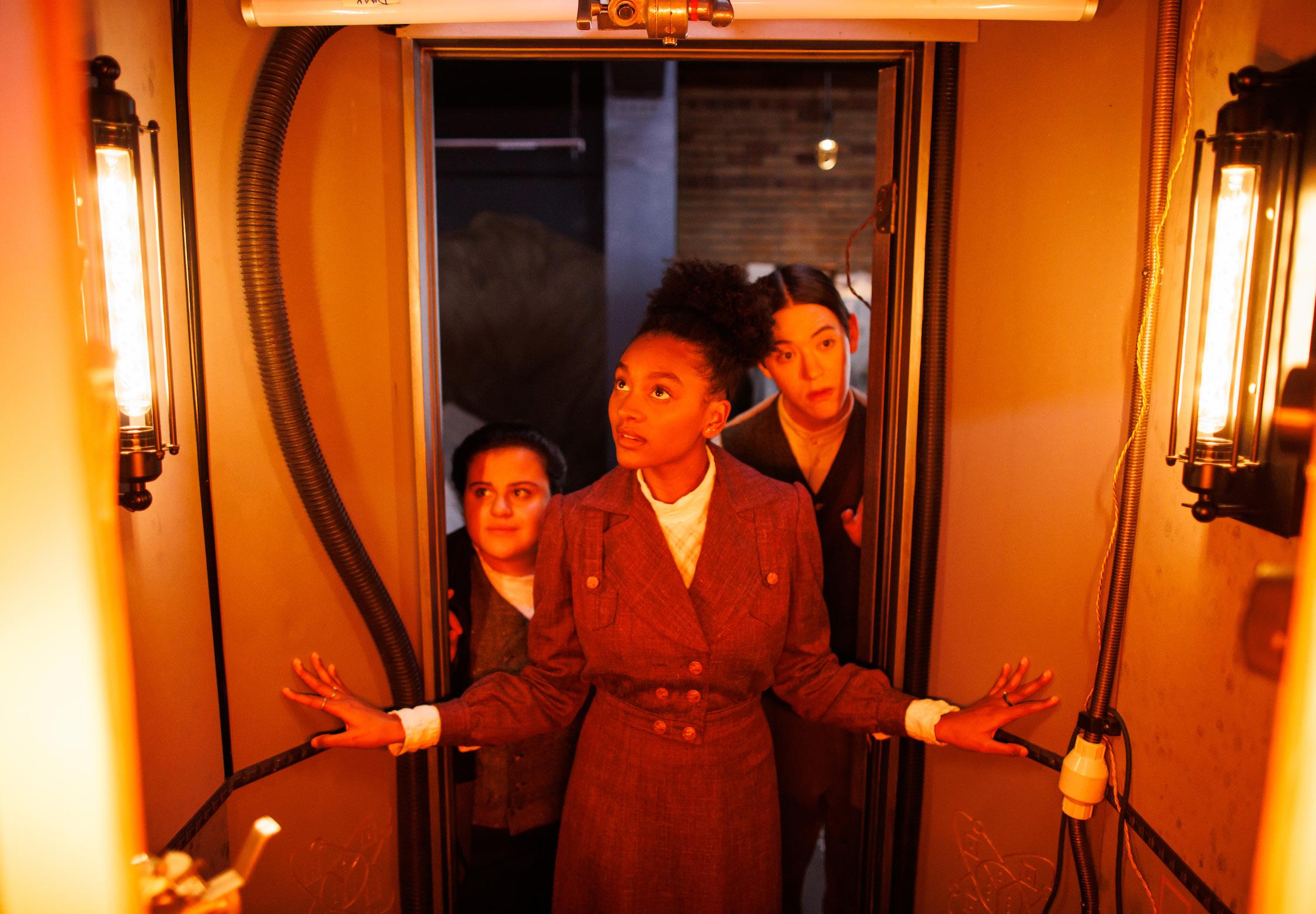
Larocque teamed up with co-writer Jessica Meya, and together the pair developed Macy Murdoch, a digital series that sees the teenage descendent of Detective William Murdoch use a time machine to travel back in time to help stop Detective Murdoch from being framed for a murder he didn’t commit.
“Keeping with the fact that Murdoch, the character, was from down east, I thought Macy could be Black, or half-Black, given the history of Black Canadians and their roots within the Maritimes,” explains Larocque.
“I wanted to tell a story that was very close to my heart. I am a biracial person and I wanted to explore what it is to be connected to family, and what happens when you look back into your family roots and you see different lines that you don’t relate to or don’t quite connect with.”
Larocque and Meya dove into the Murdoch Mystery archives – a tall order considering the show has been airing for 18 seasons. With the premise and storylines set, they handed the reins to series showrunners Robina LordStafford and Jennifer Kassabian. Meya is now writing for the Bell Media comedy Children Ruin Everything, and Larocque is working on the kids’ Max show Home Sweet Rome! and is set to write new episodes of the CBC series Allegiance
“I wanted to be a TV writer since I was basically a baby,” Larocque says with a laugh. “I’ve always loved television. It was very comforting to me growing up, when I was always an outsider. So, to be able to get the chance to do this is a huge gift.”
Larocque’s plans also include moving into filmmaking.
“I received early-stage development funding from the CMF [Canada Media Fund] for a script that I’ve been working on this year, so I’m very excited to get that out the door,” they say.
And they will undoubtedly bring their vision to life.
“When you’re a person who is from a marginalized community, or multiple marginalized communities, you have to try and work as hard as you can, as often as you can, to make yourself undeniable,” they say.
“And that is always my aim. I can do this job. I can do this job well, and I can do it in a number of different contexts. And if you give me the opportunity to show you, I will. That’s always been my credo.”


and the fashion world for more than four decades
Few singer-songwriters have been able to bridge the worlds of fashion and pop music in the way 65-year-old Jody Watley has. In the four decades she’s been recording, writing, singing, producing and performing, Watley’s body of work has shaken zeitgeists, broken new ground and allowed us to understand the importance of understatement. Her upper hand is letting fierceness and coolness live together in harmony and verse. Any time Watley premieres a new song – such as her recently released “Everlasting” – she’s able to redefine our notions of what a diva means with her refined yet nonchalant vibe.
If you listen and look carefully within the pantheon of pop music, Watley’s ongoing impact is everywhere. Her signature style has recently rerouted itself onto the runway via the elegance she championed through wearing jumbo hoop earrings, shirts with oversized collars and eclectic chain belts. Watley popularized all of those trends right after dancing on Soul Train and joining ’70s disco super troupe Shalamar. When Watley made the decision to finally go solo, her influence was unstoppable. From her first self-titled album of 1987, Watley’s arresting sound – best heard in smash hits such as “Looking For A New Love,” “Some Kind of Lover,” “Still A Thrill” and “Don’t You Want Me” – recalibrated new wave, pop and R&B music in a way that didn’t sound forced or focus-grouped. You can still hear the reverberations off her first disc – which was released 37 years ago – in recordings from artists like Janelle Monáe and Lil’ Nas X.
The Grammy voting committee so often gets it wrong when it comes to doling out the Best New Artist trophy...but in 1988, the industry could not deny Watley’s wattage and bestowed the coveted award to her (famously handed to her by the extra-sassy Little Richard – YouTube his intro for a laugh). Watley’s second disc, 1989’s Larger Than Life, cemented her fame. With genrebending and blending hits such as “Real Love” and “Friends,” Watley’s crystal ball-like sophomore prophesized the next 30 years of soul and R&B with a sound and vision that fuelled artists such as En Vogue, Rihanna, TLC and Beyoncé. The videos to Watley’s second album showcased wacking and ballroom culture before Paris Is Burning and Madonna came along. Her imagery highlighted her deep affection for European fashion designers in a way that presented her to the public as an artist - not a brand.

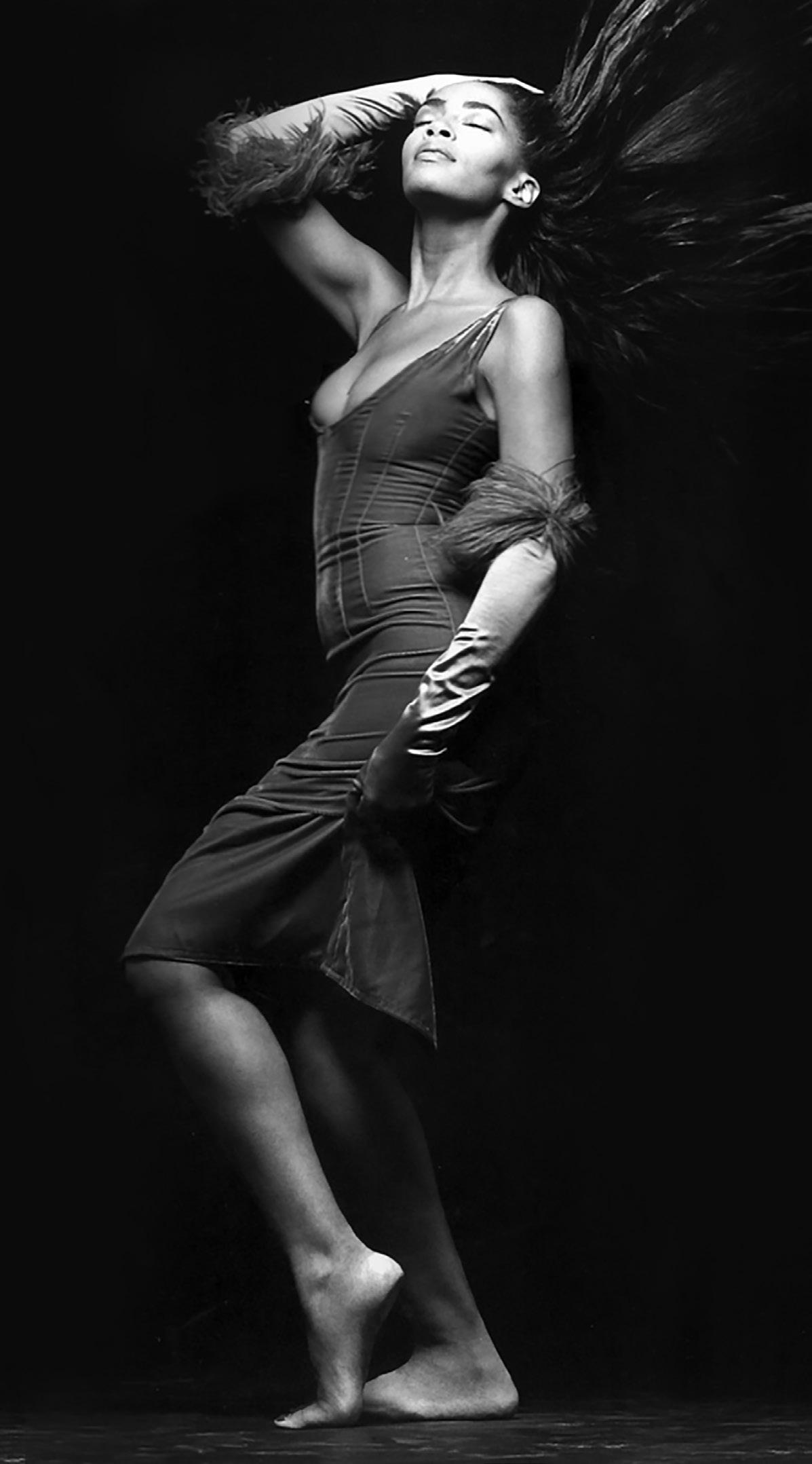
Through the years, Watley has done what few divas of her stature have been able to do. She’s not only acknowledged her 2SLGBTQI+ fanbase, Watley has worked directly with the best of them. She’s constantly shining a spotlight – or sharing it – with her hand-picked circle of queer co-producers.
Together with key 2SLGBTQI+ members, Watley has gone on to pilot nine studio albums: writing, performing, producing and presenting songs which often showcase her appreciation for what is the soundtrack of queer liberation – disco and house music. Lately, she’s taken on a side hustle for Sirius XM as the host of The Jody Watley Show, where she interviews like-minded artists, many of whom have blazed their own trails.
During a break from hosting, writing and recording, Watley sat down to talk about her provocative collaborations and multilayered discography.
Now that you have your own Sirius XM radio show, how would you say your style of interviewing has evolved?
I’m pretty chill. My larger-than-life side comes out when I’m singing or performing. I’ve learned to let a conversation breathe when I talk to guests. It really takes the pressure off and makes them comfortable.
Guests on the show like En Vogue and TLC have told you how much your vocals and your style inspired their work. Was this a surprise?
I didn’t quite understand the amount of respect that was there for my work until it was explained to me. I mean, I was told T-Boz credited me for influencing the way she sang when she first started – she even tagged me in an appreciation post about it. But to hear her describe how my voice impacted hers was a different story. Helping anyone find their own voice or find their own sound is a gift. With En Vogue, I was shy to learn that my approach to styling – since I’ve mainly styled myself – motivated the way the group wanted to present themselves. I was – and still am – humbled.
The video to 1987’s “Still A Thrill” is one of your masterpieces. It showcases you waacking in the Paris Opera House, years before Madonna’s “Vogue.” Did you know how groundbreaking it would be?
There were a lot of firsts with it. Can you believe that was the first music video filmed at the Opera House? My record company


at the time was worried because ‘Still a Thrill’ came out after the monumental success of ‘Looking for a New Love.’ There was a big difference between each track, since ‘Still A Thrill’ was sung in lower tones and a register that wasn’t as feminine as they were accustomed to, but that’s what I loved about it. It was a unique, bold move. The record company was certainly not equipped to bring that to the public. It was too out of the box or ahead of its time or whatever, but I never cared about being on time or of-the-time.
In that video, you move from the steps of the Opera House to a graffiti wall that has the words ‘Gay Color, Say Cool Say What.’ Was there concern about facing a backlash for being pro-gay?
I wasn’t trying to be controversial but I wasn’t close-minded either. I certainly wasn’t trying to do the whole ‘let me market this for the gay community because they’re my fans and I need their money.’ Never. I always worked with talented people from the community who informed my work and I informed theirs. It was always a give-and-take relationship. When I’m calling out to gay culture in any way, it’s always from my heart. It’s a part of me. It’s family, it’s friends, it’s creative partners. Disco and house music are in my bones and we all know where it came from. I grew up in this world starting from my early days on Soul Train.
I do want to talk about your powerful alliance with dancer Tyrone “The Bone” Proctor. How did he push you and how did you push him?
I met Tyrone when I was a teenager on Soul Train, and the first thing he said, ‘Ms. Thing, you need to be dancing in heels.’ He was such a character! I’d be dancing with lower energy; he’d say
‘Dance, bitch. You ain’t dancing!’ So I’d turn it up for him. He was always a hype person. It would be our back-and-forth. I didn’t have interactions like that to that degree with anyone else because Tyrone – rest his soul – had that instant connection with me. He taught me how to live and serve attitude in front of the camera.
Is it true you both had no choreographer for “Still A Thrill”? No choreographer and no choreography. I insisted Tyrone was going to be in this video with me – waacking it out, all freestyle. We made it up as we went along! I would love to have that footage because every take was different since we were just restyling each scene. Tyrone brought the underground gay, Black, Latino style into Soul Train and into what we did. It was all about showing attitude and making people see the glamour in the music.
For many years, queer people who were art directors, choreographers, remixers or stylists were hidden in the background, never to be seen on camera or credited for their work. You did the exact opposite. You know, I never thought about Tyrone as a backup dancer or someone who was hired to help. He was an equal. That video was my homage to him, too…to us both, really. To have him come to Paris with me and say to him: ‘Honey, just do what you do’ – was important to me. No limitations were there. It’s true, a lot of entertainers are so insecure, they don’t want to give acknowledgement or props to anybody like Tyrone or anyone like him who is part of shaping their work. Many of them would have thought, ‘I’m not putting him out front. He might outshine me.’ I’m an artist who loves artists. I wanted to see him tear the Paris Opera House all the way up.
You’ve been prolific with releasing songs pretty much each year. How much does news or politics affect the way you write? When I have something to say, I put it into a song. Even during the pandemic, I released a track called ‘The Healing’ because I thought it was very appropriate for where we were back then.
Your latest track, “Everlasting,” has a lyric that I want to talk about: ‘Don’t let the worst of life get the best of you.’ When did you embrace that idea?
It started as a little girl. I was always so determined, so I feel I was born with that line. Honestly, ‘Everlasting’ has now jumped to the top of my favourite songs I’ve written. It’s so important, especially in these times. Suicide rates are high. People get depressed when they go on social media and they see made-up lives. There are so many public political divides. A lot of us suffer many defeats, but that doesn’t mean we are defeated. We’ve got to all take some punches here and there, but these struggles don’t have to knock us out or be the end of us. I hate boxing – I don’t know why I’m using that analogy, but I’ve triumphed through so much. I forever want people to remember to stay everlasting and make it through – it’s become a mantra for me.
Was there a moment when the worst of life actually did get the best of you?
Definitely. During the release of my Flower album in ’98, I had already started my own label in ’95 called Avitone. I was happily independent with an album called Affection. A major label approached me and I really didn’t want to work with them, but

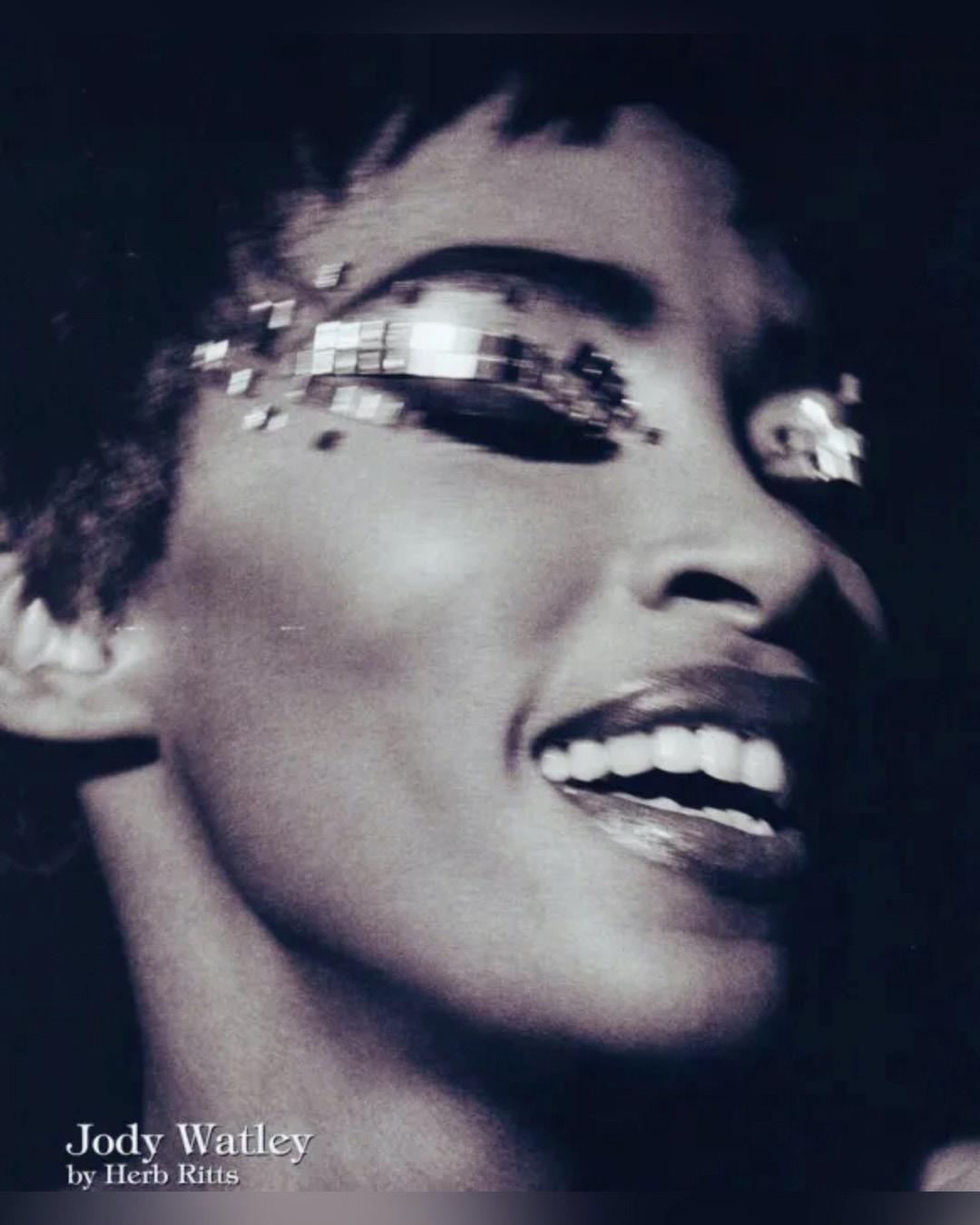
they talked me into it. It broke my heart because I was promoting the album and my song ‘Off the Hook’ from the Flower album, and it went number one on the Billboard dance chart. I was doing TV interviews about it and the record company kept pushing back the album’s release. When I signed to them, I wanted to make the album Saturday Night Experience – a club record inspired by one of my favourite albums, Everything But The Girl’s Amplified Heart. I wanted to work with [EBTG’s] Ben Watt and explore electronic dance with him. The record company agreed to it. Then, as soon as they signed me, they didn’t want me to write songs! They wanted me to do a different album altogether. That was the first time in my solo career, I thought things messed up. I really wanted to quit the music business altogether.
What were the repercussions of that decision?
When they delayed the album, I couldn’t go and record anywhere else. They had me in this weird legal limbo. I thought they were trying to push me out of the business actually. It’s never that bad because I’ve always had my kids to lift me up…but professionally, I was done with music until I heard 4hero’s album Two Pages. It gave me a lifeline. It made me want to be creative and it made me rethink what was conventional or commercially accepted. I’m lucky because all of my records – the hits or not hits – they’re still reflective of me.
Your collaboration with 4hero – “Bed of Roses” – is one of your most political tracks. The song’s verses call out: ‘Government cutbacks, war kills, single mothers, incarcerated brothers.’ What motivated you writing it?
I used to listen to NPR a lot – especially This American Life. In my car, I was listening to a particular episode about a single mother struggling, and it felt like I was listening to a good song because I did not want to get out of the car until the story was totally finished. I was so moved by it. I’ve been so blessed to exceed my dreams and create new goals for myself, but many people never get to achieve what they want because of wars, economic issues or limitations they can’t control. I wrote that song in my car. If I’m disappointed about anything, it’s that more people don’t know it or some of my best work.
The Quentin Harris and The Illustrious Blacks remix of “Everlasting” honours house music and reflects the soundtrack of Black gay clubs of the past and present. What is it about house that keeps you interested?
First of all, since day one, I’ve been house music girl – I love dance music and have remixed songs before it was cool to do that. Even if the house music artist isn’t popular, I don’t care…as long as their songs are real and the sound is legit, I’m won over. I love Masters at Work [who remixed Watley’s ‘Off The Hook’ and ‘I Love To Love’] and would love to work with them again. Nuyorican Soul is one of my favourite albums of all time. This goes for David Morales too [who remixed Watley’s ‘Ecstasy’ and ‘I’m The One You Need’] – who I still love.
When I do remixes, it can’t be some throwaway dance track. It’s very important to me to maintain the authenticity, quality and integrity of the song. A good house producer keeps the joy, the soul and the glamour of what I am making. Quentin and The Illustrious Blacks dressed up ‘Everlasting’ to the nines; they
were able to take it up a notch and reflect a big part of who I am without it ever sounding contrived.
Collaborators you’ve had in the past – like photographer Steven Meisel, makeup giant François Nars and hairstyling legend Oribe – have gone on to become the biggest names in fashion. What direction did you give them for the image blueprint for projects such as 1989’s Larger Than Life? I wanted the photography to be timeless. It had to be fashionforward, but I also did not want it dated; it had to be able to live during any time. When you look at my bone slick hair on the cover of Larger Than Life, it could be Naomi Campbell in an editorial today. I spent a fortune on research and bought imported fashion magazines like Italian Vogue for years. I knew I wanted to work with Steven Meisel and make my version of those European fashion magazine pages come to life. I said to them all: I want what you guys are doing now. No more tulle and petticoats – I want to serve fashion. I’m a singer, I’m a songwriter, I’m a producer, but I’m also bad bitch on the runway. No one was doing that at
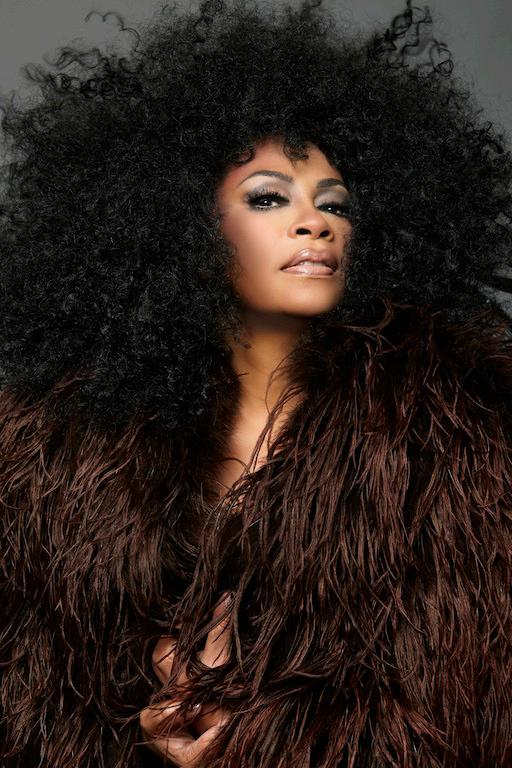
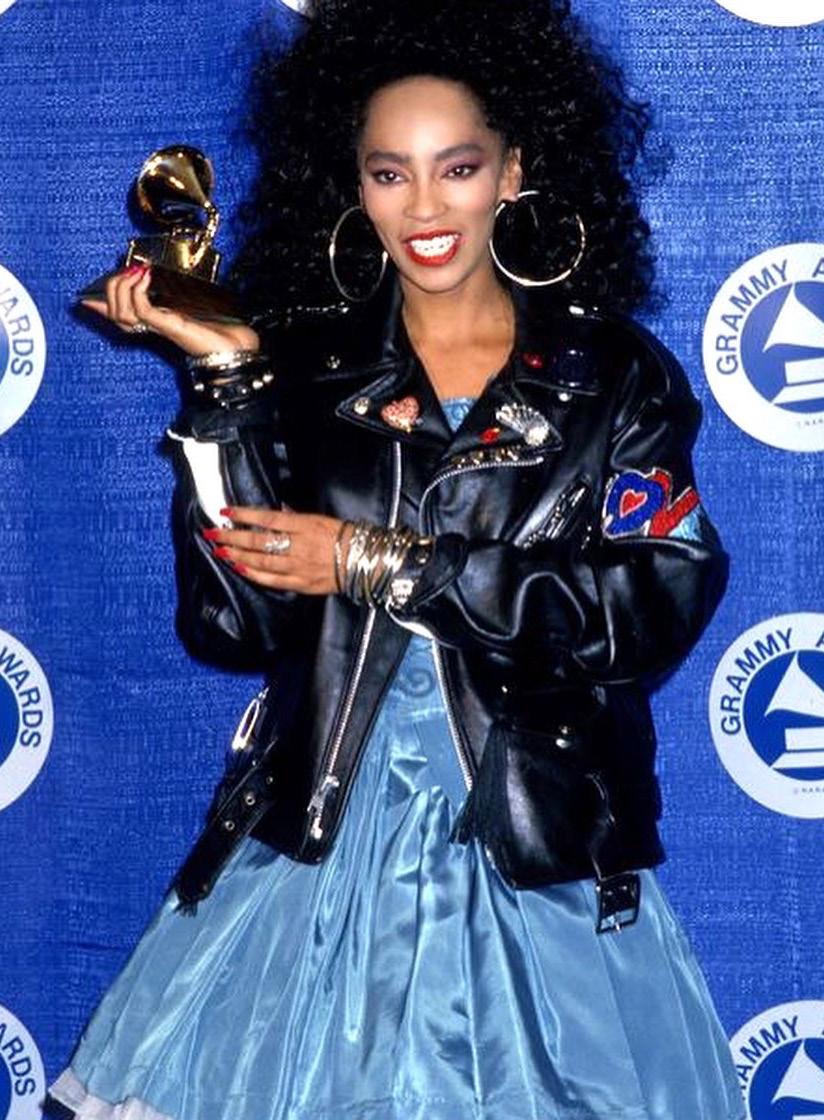
that time. Nobody was even working a wind machine, but if you look at that cover art for my song ‘Real Love,’ we worked it all day long. Nowadays, Beyoncé and a wind machine are a must. I am so proud to be part of that template and see the influence of what we did together, because it has lasted for decades.
What did fashion offer you as an artist?
A vehicle where I could truly explore myself. I grew up loving fashion magazines, so I’d be practising my poses in the mirror. Camera work is very natural for me. Steven Meisel is the most meticulous photographer I’ve ever worked with. We snapped more than a hundred Polaroids to get it right. I loved it all…put me in front of the camera and I’ll come alive. I own the photography we did together and I keep thinking I need to do a coffee table book.
Did your partnerships with Jean Paul Gaultier, Stephen Sprouse and Azzedine Alaïa help you to express who you were?
Yes. Most iconic artists have an identifiable style, but that does require taking a chance. You don’t want to come off as a copycat but you need to look for people who are speaking your language. If you want to be a true independent spirit, you also have to find like-minded people and be able to create your own vision of yourself with them. I was always mixing high and low fashion and vintage with couture. It was something I loved to do. I learned that you have to take the criticism that comes with that too. People will call you a weirdo if you’re not in the box they decided to put you into.
Who would you say influenced your own ideas about beauty?
My long-time makeup artist, Paul Starr. He worked with me on a lot of things and he’d always be ready to experiment or read my mood or translate my vision. We pushed the limits and didn’t look at the standards. I can still hear him say, ‘Yes, Ms. Jody. Yes, you’re working it.’ His kind of energy enhanced how I thought about presenting myself and my work.
Another groundbreaking moment was your video to “Friends.”
It brought a cross-section of drag queens, rappers and queer people into one room, voguing, waacking, punking and hiphop dancing before Madonna’s “Vogue.” How was it, trying to unify so many dissimilar forces on one set?
The atmosphere was very thick that day. We did it in a legit, Lower Manhattan-based club, and it was summertime and it was boiling hot. There was palpable tension because there was no fakery. That video is so authentic because those are all real club kids and no actors.
Did the finished video shoot actually match your vision?
Oh yes. My utopia was the ‘Friends’ video. I wanted to merge club with couture, the vogue balls and the hip-hop spaces, and I did. On one side you had Eric B. and Rakim, all the b-boys and their crews hanging out. On the other side, you had Tyrone Proctor, who was very influential in getting all the queens to the shoot – as well as Codie Ravioli, the transgender legend known as Connie Girl. I told the director, Jim Sonzero, that I wanted the video to replicate the scenes at L.A.’s Paradise Ballroom. In 1989, that video was my Renaissance, so to speak. I’m not comparing myself to Beyoncé because I know her fans will stone me to death, but the queens, the rappers and I created that new space on camera. I’m also wearing Jean Paul Gaultier couture, fresh off the runway. If Madonna had done the video, it would have been controversial and gotten more attention, but I wasn’t getting my publicist to hype it up. Years later, I released an E.P. called Paradise because of how inspired I was by that club. I ended up working with producers like Mark De-Clive Lowe and King Britt and Soulpersona.


In 1992, your song “I’m the One You Need” predated songs like Destiny’s Child “Independent Women” with lyrics such as ‘I’m not out to get your money because I buy my own clothes and I pay my own rent.’ Was it important to you to present yourself as a woman who is self-sufficient?
Oh yes. I’ve always tried to write from a perspective of empowering and empowerment. On my first hit, ‘Looking for a New Love,’ I say it right there in the lyrics: ‘Now you’re like the rest, unworthy of my best Hasta la vista, baby.’ On ‘Real Love,’ I sing about how I have ‘No time to play love games,’ and on ‘I’m the One You Need,’ I wanted the listener to be confident and to let them know I’m not with someone for money. There was already a whole lot of misogyny in the ’90s; I didn’t want to add to any of it. Everybody was using the H word or the B word. My point of view was, and still is, I can take care of myself. I want other people that are listening to get that sense of strength.
So much of your work is also about exploring relationships as you mature. Is it therapeutic?
I do think having a dialogue about self-worth is important and it is something I like to write about. On my song, ‘Skin Deep,’ I have a conversation with someone who I’m in a relationship with. It has lines: ‘I want to talk. I’m curious exactly how you’re seeing us. Will you be here when I’m old? Beauty will not keep us together.’ I believe that owning who you are at any age is something you should work on throughout your entire life.
In 1990, you contributed to Red, Hot and Blue, the first HIV/ AIDS charity album in history. A lot of big names passed on the project for fear they’d be ostracized. Were you worried that it could divide your fan base? No, but my label didn’t want me to do it. They said if I did a project about HIV/AIDS, it would kill my career and people would think that I had HIV or AIDS. That made me want to do it even more. I had had close friends pass away, and even though it was seen as really taboo in the Black community and the Black press to talk about HIV/AIDS, I had to. I saw it as such an honour to be a part of such an important, necessary album and documentary that was meant to educate people. It was dedicated to Cole Porter, and my parents always played jazz, so to sing his song, ‘After You, Who,’ for him and his memory? For a cause that was urgent? I told the record company, ‘I’m doing this…let the chips fall where they may.’
Your label also didn’t want to release the remixes to your 1994 song, “When A Man Loves A Woman” – which you remixed into a house track and re-released as “When A Man Loves A Man” and “When A Woman Loves A Woman.” Did they tell you why? That was at a time when there was so much misogyny and homophobia and disrespect was everywhere. The song already had a strike against it since some of it was like spoken word. It sounded like a journal entry and it tackled domestic violence, the reality of AIDS.… It wasn’t a fun, warm, fuzzy topic for a record. But for a true artist, it is something you want to stand by. When it came time for the remixes, I wanted to address and include the strongest part of my fan base – my gay fan base. It’s an anthem to acknowledge their love too. I’d love to do a new remix where I also give love to everyone who is non-binary or outside of margins. However, I do say the words ‘intertwining sexuality’ in the song.
A pivotal song off 2006’s The Makeover album, titled ‘Makeover Superstar’ has the lyric, ‘It’s not where you’re from, it’s where you’re at.’ This sentiment resonates so much with the onslaught of influencer culture. In hindsight, what do you think the song was reacting to?
I want to let everyone know that you need to be your own celebrity. It’s really about not being consumed with fame. People get stuck in where they’ve been in life and how that compares to someone else, but I think being present and focusing on the future is powerful.
Category Is Eleganza: Watley’s publicity still in 1991 for her album Affairs of The Heart and hit single “I’m The One You Need.”

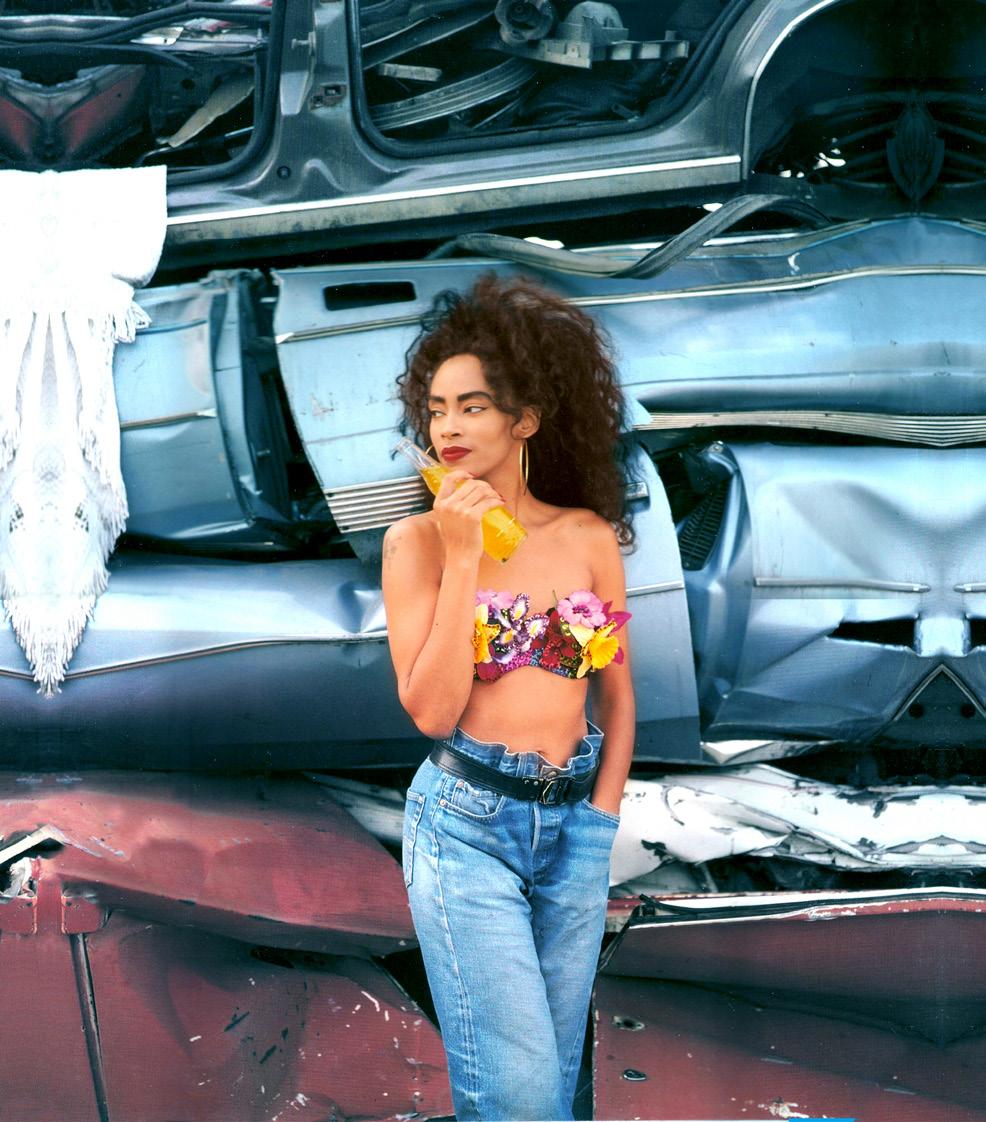
I could release ‘Makeover Superstar’ now because it speaks to social media so directly – especially the idea of getting followers with your style or your personality. There’s a lyric that addresses all that: ‘Marc Jacobs, Louis Vuitton bag, designer jeans, got to have all eyes on me.’
You also have a lot of questions in your lyrics. For example, in the song you originally released in 2001, called “Clouds,” you ask: ‘Are you listening to your life, are you listening to the changes?’ Are these questions self-directed or for the listener? Both. I wrote ‘Clouds’ as a way to remind myself that it may not be easy but I’ve got to pay attention to the universe. I believe in energy and auras, and I think we get messages all the time. We just have to look for them.… Sometimes I hear them in songs or I end up writing songs about them.
Legendary opera soprano Leontyne Price once said, ‘You should leave your era; it should never leave you.’ Do you think that applies to the music industry of today?
I feel fortunate enough to keep evolving as an artist and not feel stuck in nostalgia. The easiest thing to do is schedule a thousand Greatest Hits tours. I get it, but I don’t market myself as that kind of artist. My dad used to say, ‘Don’t be the last one at the party.’
In your 2006 “A Beautiful Life,” there’s a lyric that breaks down the dilemma of bad relationships: ‘I’d rather be living on my own than to live in a constant state of misery.’ What inspired the verse?
That was a lingering thought from my divorce. When the relationship is over, move on and everybody go be happy. People need to be reminded: you can be miserable by yourself or happy by yourself. It’s a choice.
I recently reread the memoir of one of your heroes, Grace Jones. She talks about how singers such as Lady Gaga, Rihanna and Beyoncé are ‘risk-takers who don’t want to take risks.’ As someone who has stuck their neck out so much, do you see that too?
I’m running my own race so I really don’t have an opinion on that. Besides, the music industry is in shambles. That said, there are
quality artists out there making great choices.… I love Sy Smith. Her new album Until We Meet Again is fantastic. Times change and there is no more artist development in music so it’s hard to judge, because artists – including myself – are in a completely different ball game than in the past. I’ve been lucky enough to be independent for so long. From my first album, I’d often style myself, make connections with designers for myself, come up with a vision for videos and albums with people I chose to work with. For the most part, I never got talked into something that did not represent me at all.
Did you feel the repercussions of not being middle of the road or following trends?
I’m always an outcast in that way, an outlier or whatever. I got it all: she’s not Black enough, she’s not street enough, she’s too this, she’s too that. The biggest risk is being yourself. My parents did a great job by letting me know that it’s not what other people think of you, it’s what you think of yourself. So, I’m really grateful to them for instilling me with that. I miss them both.
Who would you want to collaborate with now?
I like Anderson Paak and Black Coffee, but I love Kaytranada. His dance beats are subtle and he understands dance music history… but he’s so modern. I like his vibe because it has a classic quality to it. He’s cute too. I would be happy to do a guest vocal on one of his records.
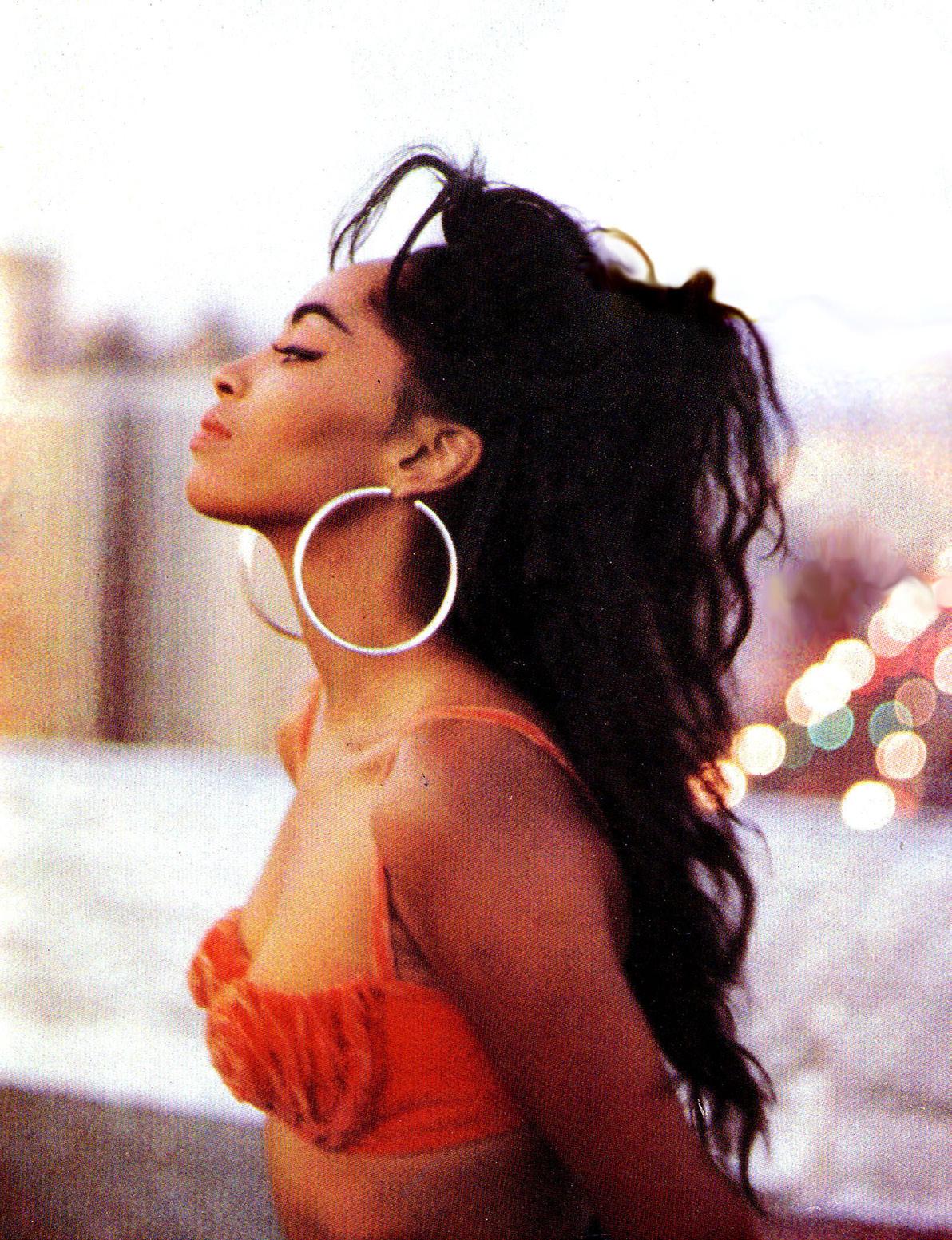
Actor/comedian/social media star Pete Zias on creating Total Trash Live, his scene-stealing role in the horror movie Ganymede, and his upcoming star turn in the play Messy White Gays
By Elio Iannacci
Askew. Unhinged. Who is she? If you’re a fan of Total Trash Live – a multi-platform show hosted by the multi-talented queer Pete Zias, these five words have, no doubt, been haunting your mind since you first saw or heard him on Instagram, YouTube or via podcast. Repeated more than 20 times per episode, this quintet of words explains the brilliance of what Zias – an L.A.-based actor, comedian and social media star – does every two weeks. He dissects all the “askew” behaviours of people written about in the news (sharing snippets of insane items from Fox News and Inside Edition), he points out which celebrities he feels are most “unhinged” (employing current and past tabloids such as the National Enquirer to back up his claims), and he loves to question the mysteries of any unknown person he is fixated on with his trusted magnifying glass and a rather intense question: “Who is she?”
His legion of followers, who call themselves Trashies, are in on all the jokes. They have been growing in numbers ever since 2023, when Zias decided to take his interest in deconstructing tabloid culture on social media. His hot takes on rising and falling stars may be far from serious, but his no-nonsense demeanour (usually followed by a “Gosh darn it!”) is the purest example of high camp you can find on the internet today.
Aside from celebs, he’s got advice for Girl Scouts (“You want to make money, don’t sell cookies, sell Ozempic!”), the two famous horses who escaped from an English royal palace (“Run away from Camilla while you can, honey!”) as well as the actress in the now-famous “I’ve fallen and I can’t get up” commercial (“Get up, get up, you spoiled brat!”). Writing it down on paper doesn’t really do any of his jokes justice, which is why Zias never has a script. The whole show is improvised.
A typical episode recaps Zia’s madcap life in L.A. (parking laws and wi-fi strength are thorns in his side) and may include a few bits of his past life in New York City (“Luther Vandross called Aaliyah a Janet Jackson wanna-be at a luxury gym I worked at!”), but the format of TTL is completely unstructured.

Born in Weirton, West Virginia, Zias is candid about his remarkable trajectory and his salad days as a diva-onic teenage theatre student in his hometown. “My high school was called Weir High, so that should tell you everything.” It may not tell us everything, but a recent all-encompassing chat with IN Magazine revealed a few of Zias’s beloved inspirations and exciting next career steps.
When did you move from West Virginia to New York?
I was 21, and then I went to college there at Marymount in Manhattan, stayed there for 10 or so years and moved to L.A. in 2006. That was a shock because I walked and took subways in New York. I still can’t drive on the freeway in L.A., because I have a panic attack because everyone is in eight lanes going 90 miles per hour. Now, I take service streets, Ubers and Lyfts.
You joined The Groundlings, the improvisational and sketch comedy troupe and school in L.A. What happened then?
I was doing a gay variety show called 3 Dollar Bill and met Drew Droege and James Adomian [comedians and actors] and started taking classes at The Groundlings. I go do their gay improv show called The Gale. I just started doing performances all over town, characters, stand-up.
Which characters emerged first?
A single mother called Crystal who has a lot of bad luck. She has a daughter named Barbara who hates her. She was partly drawn from [my] mother. Throughout all my writing of characters, I kept reading tabloids like the New York Post and Daily News every day, and used them.
When did the tabloid fixation begin?
Probably around 12, I started a collection. My mother used to get them. I would read hers and then bought my own. I got very obsessed with Old Hollywood. I love Lucy [Lucille Ball], Marilyn Monroe and James Dean, so I was always looking for any information about them. Later, I became obsessed with JonBenét Ramsey. I
still remember the first time I saw her on the cover of a magazine. That was the first time I think I said, ‘Who is she? Who named her?’ Well, as we all know, her mother was from West Virginia.
What is your usual tabloid routine?
Every week I go to get my People magazine, my Globe, my Star, my Enquirer, my Entertainment Weekly, and just read them alone. This has been going on for decades. One day I was doing a show at Sketchfest in San Francisco, and somebody told me to read them online, so I started to. The way these tabs are written is so crazy and so funny. They rhyme and are campy but don’t know it. The covers and cover stories are beyond dramatic, but when you really get into the issues and read non-celebrity news, it gets wild. Lately, I can’t stop thinking about the news item about a woman who threw a burrito at her husband’s head and was arrested!
What other tabloid stories cannot leave your brain?
This woman that was attacked by an otter. Oh, honey, the pictures are graphic. But the way it was written was so ridiculous. She was outside…just relaxing in a tube on the river. And this otter, honey, came after her! Tore her to pieces. The feature has a picture of the evil otter and his friends. It looks like all the other otters are laughing!
Which state has the best tabloids?
Florida, honey. There’s always some sort of animal terrorizing a family. There was a whole feature on monkeys attacking a woman in her house. Another story had photos of an alligator knocking on the door. These tabloids keep saying there’s a Loch Ness monster somewhere down in Florida, and I believe all of it!
I don’t believe a lot of things – I can be skeptical – but when it comes to Florida, I’ll believe a Loch Ness monster is running things. I have cousins and relatives that go there, but I won’t go to Florida.
You’re from an Italian American family. Were they all storytellers?
My dad’s half Russian and half Italian, and my mom’s full Italian, but we mainly have Italian influences. When I was around my grandparents and them, everybody was screaming! It’s so loud. Everyone had something to say at the same time. I didn’t have any siblings so I’m the star of the family. The great thing about my parents is they love celebrity stories, too.
Who was your mom and dad’s most bizarre sort of star fixation?
Well, my dad loved Natalie Wood and he always blamed Robert Wagner for killing her. For years, we kept hearing about he hated Robert Wagner. My mom loves blondes, like Marilyn [Monroe], because [my mother’s] a blonde now. She was a hairdresser and did her clients’ perms and cuts in the garage – my dad made her a little salon. We always had wigs in the house.
What did being around all the salon ladies offer you?
Tons of gossip, because I loved to eavesdrop. I was eight, and a quiet child, so I could listen to the neighbourhood scandals. We also had a weird neighbour who would borrow everything like lasagna sauce or coat tags or bread.
Did your parents support your acting ambitions?
When I used to audition for plays when I was in high school, my
mother would show up using her maiden name and audition for the same play. I would get so mad about it. I felt like Christina Crawford and my mom was Joan. I used to make movies in my house. My dad would build sets. My dad built a great set from I Love Lucy. My mom played the Italian woman and I played Lucy [Lucille Ball]. It’s one time when Lucy went to Italy, and she was stomping on grapes. My dad also built a conveyor belt and we recreated the Lucy scene with her working at the chocolate factory,
First time you knew you wanted to be an actor?
When I saw The Muppet Show. I used to take my stuffed animals and act full scenes with them. Miss Piggy was the best – she beat up everybody. Hi-yah!
At The Groundlings, what helped you the most in terms of any lessons learned?
In The Groundlings you write a lot, pitch your skits and see if they’ll end up in the Sunday Company show. It’s a good way to stop overthinking, and just put things out there.
Which early character do you remember loving a lot?
His name was Junior, and he just was trying to get his roommate to buy a washer and dryer set. He would get very upset when his roommate would be like, ‘No.’ He would get up and threaten to walk out. It was just as simple as that. He was based on somebody I know.
You worked with Joan Rivers…tell me about the process.
On Fashion Police. That was a crazy. I had to write a million jokes and was given every picture from the red carpet. Each photo needed at least six jokes. I met her at Melissa Rivers’ house and sat in the dining room as Joan was going through them. All these cabinets had really nice china with white and green patterns in them. Joan just looked down and doodled while you pitched your jokes. If something was funny to her, she’d stop and laugh. She must have felt me staring, because we made eye contact and I could almost hear her think, ‘Bitch, what are you staring at?’ I love her so much. She was better than Johnny Carson.
Name a character that you created that represented your surroundings the most.
Teddy Teddy – a legendary New York City ’90s club kid. He was my one-man show. I started doing Teddy Teddy because I missed New York and I missed those clubs. It was such good nostalgia. I saw Madonna at the Roxy for Valentine’s Day ’98, during her Ray of Light era. She sang ‘Shanti/Ashtangi’ and ‘Sky Fits Heaven’ before the album came out. I had a hat with a fork and a spoon on it. You could put your meatball on top of it. So when you get the munchies on the dance floor, you’re always ready.
What was your preferred club vibe?
This place called Champs, and Frankie Knuckles was spinning. He would give you a 20-minute Toni Braxton remix. I never met him but I used to dance next to him on the platform.
You always say that Hollywood is crumbling. Why?
Melrose is askew. Alexander McQueen is now a Casper. Marc Jacobs is gone. Fred Segal. Gone. What they should do is take all the abandoned buildings and turn them into roller skating rinks and performance spaces. Not stand-up, performance spaces.
How has your relationship to tabloids changed through the years? It’s gotten more intense. I look at these tabloid stories as poetry. Before, it was more of a window into what’s going on in celebrity world. Especially before blogs.
Tell me about the play you are involved in, called Messy White Gays. In terms of the script, who do you play?
We’ve had staged readings of it and soon it’ll be a full-on production. I’ve read for the role of Thacker so far: he’s an unsuccessful chorus dancer in New York who is past his prime. There’s a throuple in the play, and hilarity and mystery ensue when something terrible happens to one of the three.
How do you think the play reads messy white gay culture?
The characters frame themselves as such good people and they’re doing all the right things. They say what they think they should say, but they behave. We all want to come across as more considerate, but look at how so many of us are behind the scenes. Messy. But so many of us try to keep up appearances. I think everyone wants someone to say, ‘Babe, you’re the nice one,’ but meanwhile, some of us are just awful people.
Who do you think is one of the shadiest people in Hollywood? I really like the way Mariah Carey throws shades – on a heartbeat will go to shade. I mean, don’t come for her.
One of your most hilarious characters is mirrored after Rachel Dolezal [who portrayed herself as Black although both of her parents are white]. What research did that entail?
I still laugh at that video where she gets caught on camera. They ask her about her true background and then she runs away. Out of the camera frame! People need to look at Rachel Dolezal – she needs the fame. She’s committed to that character. She hasn’t backed down. It’s Oscar-worthy. She should have won the Tony, the Emmy, the Oscar for that character. She needs to be EGOT, honey.
In a previous podcast called Chacha Heels, you broke down the hypocrisy of cancel culture.
Some of it is serious but most of it is askew. If you say something horrible about somebody, you get cancelled. Then you get to say, ‘Everyone’s attacking me!’ and you become the victim. Then you become uncancelled because you’ve been victimized. Even if it was you who was bullying somebody else, someone bullied you for bullying. Then you get to become the victim. You’re cancelling the person that cancelled you. So it’s good to get cancelled. Get cancelled, honey, then you can play the victim. Everyone loves the victim!
In one of your most recent Total Trash Live performances, you made a diagram of the history of Bennifer – a.k.a. Jennifer Lopez and Ben Affleck. Was this to sell to the public?
It’s absolutely for sale for one thousand dollars. It includes Jennifer Garner, Jennifer Lopez, Jennifer Aniston. It started off with Jennifer Lopez, then Jennifer Garner, then Jennifer Lopez, then Ben’s rumoured affair with Jennifer Aniston. Now it’s back to Jennifer Lopez. I believe in the power of Bennifer. And I believe it’s a trilogy. But it could be a whole limited series. But by the time this comes out, who knows what’s going to happen with Bennifer and the diagram will be poster-sized.
Do you think your opinion of Ben Affleck has changed ever since you read this story about him ordering six pizzas? Ahem, it was actually five pizzas. I like him more because of it. Jennifer Lopez doesn’t let him eat bad food and that’s his godgiven right!
If you could pick a dream director to work with, who would it be and why?
John Waters. I love the movie Serial Mom. I saw it in the movie theatre when I was 18, and I was screaming and laughing so much that people were turning around and giving me dirty looks. His characters remind me of me. I used to prank call everybody – just like Kathleen Turner’s character. I called a teacher and acted like I was the student’s mother and would say things like ‘I’m so sorry, my daughter’s not doing well in school. But my husband has been having an affair, and we’ve been really stressed out.’ Then I called the student’s mother and acted like I was the teacher and spread more false information. I was just getting revenge on everybody. I would change my voice and nobody would know. That’s how many ding dongs were around me.
What is that power between the intersection between a queer person and a pop diva? Explain it to me as a fan and as an artist. I identify with divas, probably because I’m an only child. Divas are alone on stage and they have to shine. It’s all about them. Being gay is like that: it’s about being a solo act, honey. Gay people identify with them because they get a lot of criticism and pushback, and we have to be strong while we take a lot of shit from the world. I’d look to the divas while growing up, and say, well, if they can handle it, then I can handle it. Between divas and queer people, there is a secret code and it’s in the music. Sometimes it’s hidden, sometimes it’s blatant.
Let’s talk about the new horror film you are in called Ganymede. Where was that shot and what was the shoot like?
I had to fly to Paducah, Kentucky. I took two planes, and somebody had to pick me up and drive me from Nashville to Paducah. I have to put on all that makeup and contacts that make my eyes white. I was completely blind in them for hours, so I couldn’t see and couldn’t take them off. People had to walk me around the set. So, yeah, I did that scene blind and of course I was scary.
What projects do you have on the go or that you’re planning to do in the next year?
I’ll be doing a tour of Total Trash Live on stage. New York is confirmed but I’m looking at Canada next. I’m just a hired actress on Messy White Gays but in the spring, we’ll hopefully be in New York on Broadway. Look out!
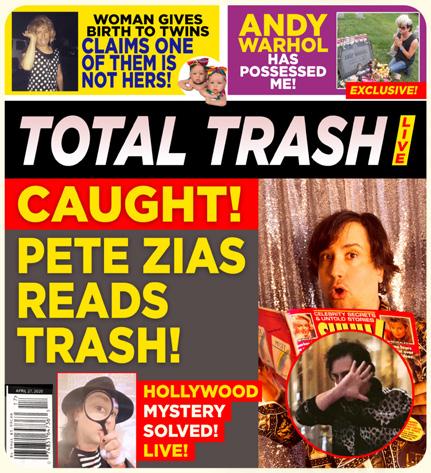







By Christopher Turner
The holidays are fast approaching, and to help us celebrate, RuPaul’s Drag Race royalty Jinkx Monsoon and BenDeLaCreme are heading out on the road with their seventh annual “The Jinkx & DeLa Holiday Show” tour. This year the show promises to be bigger than ever before, with performances throughout North America from November 17 through December 29, with Canadian stops in Toronto (November 26 at Meridian Hall), Montreal (November 28 at L’Olympia de Montréal) and Vancouver (December 28 at the Queen Elizabeth Theatre).
Jinkx and DeLa have remained the sole writers of their holiday extravaganzas since the very beginning, a major achievement for two drag artists who tour on such a large scale. They’ve also had the same goal throughout the show’s seven-year history of making the yuletide super gay. In the past, the drag duo have done it all: travelled through time à la A Christmas Carol with a wacky multiversal twist (this was the same year Everything Everywhere All at Once + MCU multiverse films dominated the box office), defeated AI overlords trying to replace them, battled it out to define the meaning of Christmas, got trapped in a meta world of their own creation through the lens of a Faustian nightmare, and explored post-pandemic depression via a talking peppermint candy puppet. And that’s just a few of the show’s past plotlines. The 2024 iteration of The Jinkx & DeLa Holiday Show promises to be just as over the top with a completely brand new production, which was co-written and co-created by the pair, and directed by DeLa.
Jinkx and DeLa had worked together for years in various capacities, but in 2018 DeLa suggested they go all in on expanding the Holiday Show together. (The self-proclaimed “terminally delightful” DeLa had been producing holiday shows in Seattle for 10 years before that.) The shows grew bigger year by year, and now the pair have become fixtures of the holiday season. In 2020, Hulu even picked up The Jinkx and DeLa Holiday Special, which brought their self-written holiday season staple to an even broader audience.
IN sat down with Jinkx and DeLa before they headed out on the road, to talk about what fans can expect from this year’s wintertime staple, and more.
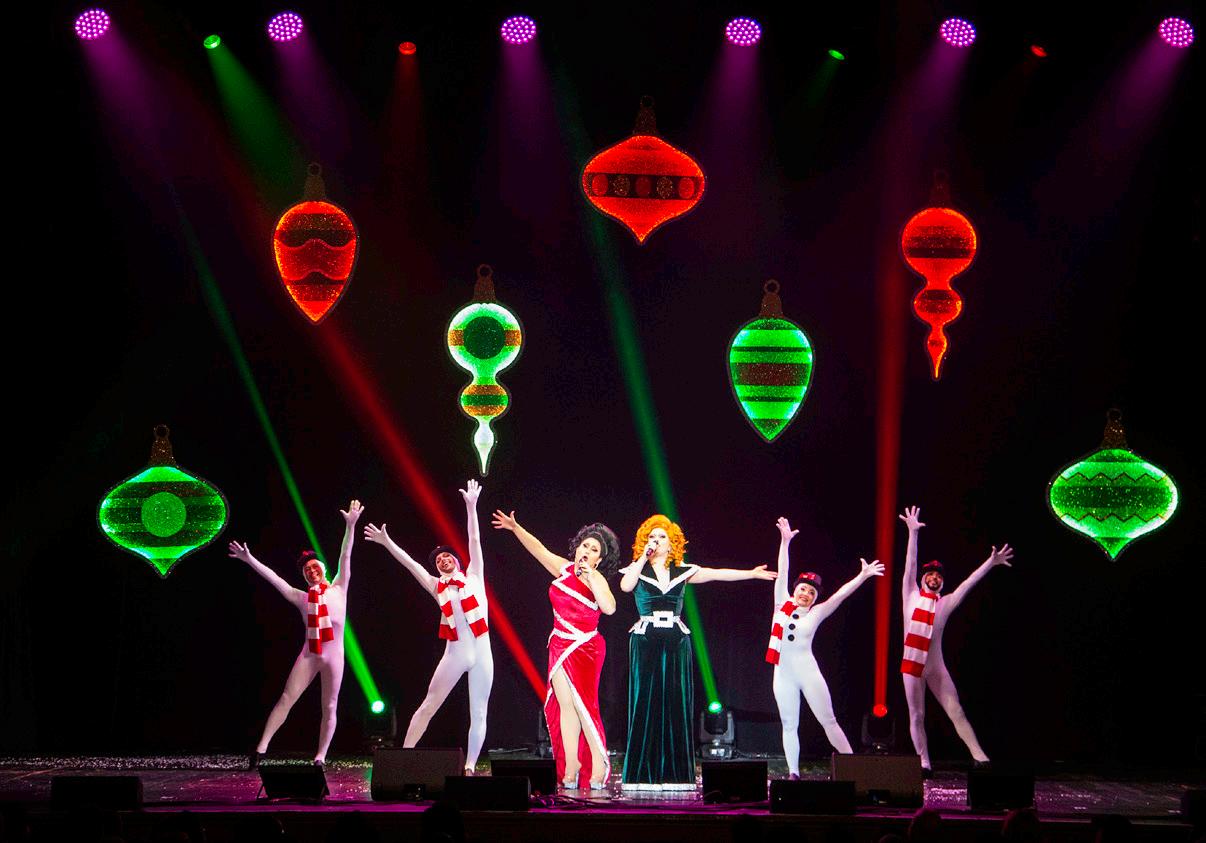
Let’s kick things off and talk about The Jinkx & DeLa Holiday Show! What can fans expect to see this year?
Jinkx: Well, if anyone has seen The Jinkx & DeLa Holiday Show before, they know that it is a unique blend of our two aesthetics. This show is our baby! For the last several years, we have been taking classic holiday tropes and stories and then combining them with other classic tropes and stories in our unique way.
For example. Two years ago, we did A Christmas Carol/Back To The Future mashup where Jinkx and DeLa hijacked the Ghost of Christmas Past to mess with time, which messed with history. [Laughs] So it’s a wild ride every year, but we work really hard on it, and I think that’s why audiences come back time and time again. Because when you care about something this much, it tends to be special.
DeLa: I think the thing that audiences come back for, or that new audiences are excited and surprised about, is that we come at this production with a camp sensibility – there’s always a lot of amazing visuals, pop music parodies and, obviously, wall-to-wall comedy. But we also always make sure to address whatever is happening culturally. This is obviously a very tough, crazy year. Every year we say, ‘Wow, at least things can’t get any worse,’ and then the next year comes and slaps us across the face. This is another challenge: how do we uplift and also address what’s going on and make people feel like there is solidarity and a strong community? I think it’s that combination of levity and irreverence and real genuine heart.
“ We come at this production with a camp sensibility – there’s always a lot of amazing visuals, pop music parodies and, obviously, wall-to-wall comedy.”
Would you say that’s the main reason you keep coming back to The Jinkx & DeLa Holiday Show?
Jinkx: As drag queens we have a responsibility to entertain, and as humans we have a responsibility to our mission to try and make the world a slightly better place. So, I like to say that when you take entertainment and fill it with intention, that’s when it becomes art.
The two of you write a brand new production for the Holiday Show every year.… What kind of timeline do the two of you work on?
DeLa: Oh, it’s bonkers! I mean, I still can’t believe that we do it. We start our writing process around the beginning of September. Both of our years are so jam-packed, it’s hard to set aside the time, but we make sure that we do it. We really just go into a full-throttle writing workshop in all of September. Then we head to Seattle in October, where we work with the artisans who build our stage props for us as well as our dancers. We create all of the choreography for the show in that month as well as all of the staging, which happens in collaboration with the artists we are working with. It’s a little bit less than a two-month process from inception to opening night.
Wow! That seems like a massive undertaking and an incredible challenge!
DeLa: We hit the boards hard. I think that if we were any less inspired or driven by this specific thing, we would never be able to pull it off. I’m really proud of what we are able to do in that short amount of time.
Jinkx: I want to point out that that’s where we got to because of the loyalty of our audience, and through tenacity, and through DeLa being a brilliant producer. There’s a team of brilliant producers: Kevin Heard, Gus Lanza and the associate producer Jin Moon. It’s such an incredible team, and every year the team gets to grow a little bit more and take on a little bit more life. But that two-month process…we had to fight for that! There was a time when we had to do that two-month process in about two weeks because that’s all we could afford to do. When you’re an independent, scrappy, marginalized artist creating your own work, it’s hard to take a lot of time off because you’re hustling the rest of the year. Like DeLa said: our schedules are jam-packed. So the fact that we got to a point where we could even talk about taking two months to work on creating something is a huge win as artists.
DeLa: And the scale of the production really reflects it.
Jinkx, I’ve read that you credit the Holiday Show for the launch of your Broadway career. Can you tell me a little bit about that?
Jinkx: Well, DeLa and I have known each other for a long time, and a lot of my best work has come from my friendship with DeLa: either being inspired by her, being motivated by her, being counselled by her. And then, when we started collaborating, it was like we both through the years have been able to unlock things in each other. We both have helped the other grow in directions that they weren’t already proficient in. She reminded me of the respect I have to have for this if I want to do my best work. I took that mentality and I applied it to my life. A year after we created this show, I stopped drinking, and my life has been on this upward trajectory that comes with a lot of hard work and a lot of commitment and a lot of responsibility…but it started with believing in what I can do as an artist in an industry that tells you that you have to jump on whatever is hot right now. DeLa reminded me that if you create something that you believe in, and you create something that you actually are passionate about, the success will follow because the authenticity will resonate with your audience. So, from the creation of the Holiday Show, I’ve blossomed. And that’s because I showed up for the work and I chose to do it…but it definitely started there.
How did the two of you first meet?
Jinkx: I’ll set up a little bit of it and then I’ll let DeLa take it. [Laughs] I was going to college in Seattle, Washington [Cornish College of the Arts], and Keira McDonald, who was my favourite teacher and is still currently my theatre mentor, said, ‘There’s a drag queen in Seattle that you have to become friends with, because she’s doing something so special and so unique that you are just going to love her and you’re just going to want to work with her.’ I shrugged it all off because, you know, I had already been doing drag for a while and was like, ‘Sure, sure, every drag queen is the best drag queen you’ve ever met.’ And
then I saw what DeLa did and I realized that Keira was right. It was like this fangirl crush that became a friendship that became a sisterhood. She’s simultaneously been my best friend and mentor for a long time. So, that’s the setup.
“ I think our biggest strength is our community, and not everyone has a community like the queer community.”
Beautiful. DeLa, you’re up!
DeLa: On my end, I have been creating and producing shows in Seattle for a while. Obviously not on the scale of where I am now, but when I moved there, I really found an incredible community of inspiring artists. I had heard about this young drag queen in town and I kept hearing whisperings about her, and I kept asking myself why she kept continuing to come up for me. I eventually saw something posted online that announced she was doing a show with her musical partner Major Scales, and they were doing it at a local Starbucks on a Tuesday in the middle of the afternoon. Like, who is this person? [Laughs] So I went to this coffee shop and there were like 15 folding chairs and I kept asking myself…what is this?! And then Jinkx and Major came out and did this performance, and I had never seen anything like it. It blew me away. When the show ended, I turned to my friend who I had come with, and told her that I have to make friends with this queen and cast her in my next show, because otherwise we’re going to be rivals. [Laughs]
So, what happened?
DeLa: So, I marched up to Jinkx after the performance and…
Jinkx: She handed me a business card…like, a real business card! I thought it was very impressive. But to sum it all up… you know the movie Death Becomes Her and their friendship? It goes through a lot of trials and then in the end they realize that they have each other for life for better or for worse. [Laughs]
DeLa: I don’t know if that’s a good analogy. [Laughs]
BenDeLaCreme
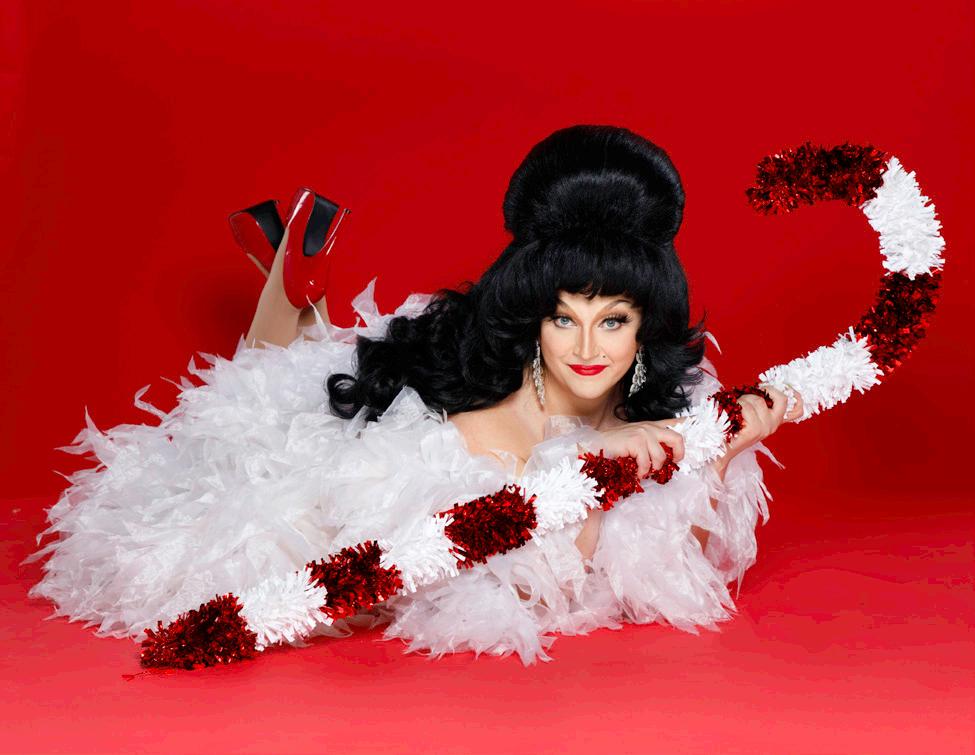
Jinkx: Two high-profile drag queens sharing the stage could be a recipe for disaster, and yet for the last seven years – through showing up for each other, through trust and respect, and through putting in the work on our friendship as well as our professional partnership – that’s what’s kept this going and that’s what has kept it real. [Pause] And it all started at a Starbucks in Seattle at 4 pm on a Tuesday.
You’re both role models to so many people within the community. I’m wondering what your advice is to people who are looking to you as a role model?
DeLa: One thing that ties into what Jinkx was just addressing is that there is a lot of messaging that encourages rivalry within the queer community, and often folks are pitted against each other. I think something that is really important, that has added to our success in this industry and as humans, is realizing that when you meet someone special, it doesn’t mean that you’re less special. It could mean that you have found someone to enjoy camaraderie with or met someone to team up with. We are stronger together. That’s true of us, and that’s why people identify so strongly with our friendship and our dynamic on stage. It’s because they see that, and I hope it is an inspiration to realize that the queer community has to band together, especially right now with so much coming at us.
Who do you both consider as role models?
Jinkx: We both look up to the old guard of drag. That applies to the queens and the queer people in the drag and performance community that got as big as you could get without a TV show dedicated to drag – you know, that Before Drag Race time. So, Peaches Christ. Or Varla Jean Merman; she was a drag queen on Broadway before I was, so I’ve always looked up to her as a performer. Miss Coco Peru. We lost Heklina [the renowned San Francisco drag queen passed away in April 2023], but she was a great friend to both of us. Kevin Aviance. There are people around today who built the drag community up before there was a TV show about it, and I think we both have a lot of respect for those who paved the road for us to pick up and keep paving.
DeLa: Obviously we both have such an incredible platform and we are both so grateful for it, but sometimes I think there

is a perception that drag came out of nowhere. Varla is a great example: she was playing the Sydney Opera House in the early 2000s. Those were the people who were high profile enough when I was younger to make me say, ‘There is a place for me out there.’
Jinkx: Exactly. Seeing people like Varla Jean Merman and Coco Peru made me say I can do that too.
We are seeing so much political hate and anti-2SLGBTQI+ legislation happening around the world right now.… How do you think the community can best combat the landslide of hate that we are seeing and experiencing?
DeLa: I think it’s the one-on-one connection. I think it’s the building of community. I think it’s allyship and realizing that so much of the division that happens is due to the isolation that we experience and the way that we communicate largely through our phones. So when we come together in the same space, like a performance space, it’s about understanding that we can uplift each other and that we are strong. That’s how the queer community has gotten to where it is. We worked so hard to overcome so many things in our history. We have come so far, and we have to continue on. We’ve gotten a lot, but we also have a lot to protect.
Jinkx: I think our biggest strength is our community, and not everyone has a community like the queer community. Our community is global, includes everyone and welcomes anyone. Anyone can be queer. Anyone can be a member of our community as long as they abide by the conditions of our community: equality.
DeLa: Being queer is not really about who you love, it’s about who loves you.
Jinkx: And The Jinkx & DeLa Holiday Show allows you to see what DeLa was talking about in action. You put your phones down and you watch a show in an audience filled with a ton of people who feel the same way you do. You are in a safe space. DeLa talked about the importance of one-on-one conversations and why they are so necessary right now. When we created our show, that is us having one big conversation with our audience. That’s what we try to use it as: from us to you! We talk to you about how we see the world right now and what we see as a way forward. And, usually, it’s through unity!
This interview has been edited and condensed for clarity.
The Jinkx & DeLa Holiday Show will hit 33 different North American cities with three stops in Canada: Toronto on November 26 (Meridian Hall); Montreal on November 28 (L’Olympia de Montréal); and Vancouver on December 28 (Queen Elizabeth Theatre).
Tickets are now on sale for all US and Canadian dates at jinkxanddela.com.
VIP packages, including photo opportunity and a Q&A with the stars, are also available to purchase.

If nominated, the Spanish actress would make history as the first openly trans actress to land an Oscar acting nod
Spanish actress Karla Sofía Gascón made history in the spring when she became the first transgender woman to win Best Actress at the annual Cannes Film Festival in May for her role in Jacques Audiard’s genre-blending queer crime musical Emilia Pérez. The 52-year-old Gascón, who was working alongside co-stars Zoe Saldaña and Selena Gomez, has been the recipient of critical acclaim since the film debuted for her role as a Mexican drug lord who comes out as a transgender woman and decides to transition, and she has been picking up serious Oscar buzz ever since.
With Cannes over, the spotlight now turns to the Academy Awards. While the possibility of making history with an Academy Award
nomination of course excites Gascón, she has emphasized that it is ultimately beyond her control. Speaking at the San Sebastian Film Festival in Spain in September, Gascón addressed the Oscar buzz, especially as she is being submitted for Lead Actress consideration. If nominated, she would make history as the first openly trans actress to receive an Academy Award nod.
(Though Gascón would be the first openly trans actress recognized by the Oscars if nominated, the first openly trans performer to receive any nomination was the singer Anohni, who was up for best song in 2016 but boycotted the ceremony. Elliot Page, who was nominated for the 2007 film Juno, came out publicly as trans in 2020.)
“You can do whatever you want to win, but if you’re not going to win, you won’t,” Gascón stated. “I can’t do more than present my work. If it happens, it would be wonderful for me as an actress.”
Gascón stressed the importance of being recognized for her talent, not her identity. “Sometimes, people think you’re given a prize because of your community, not your role. That annoys me,” she admitted.
She also highlighted her dedication to the craft, saying, “I’ve done a role very few people could have done,” adding that her focus remains on her performance. While recognizing the significance of her identity, Gascón concluded, “The only thing I can do is act. I want the focus to be on that as well.”
The 97th annual Academy Awards will be held on March 2, 2025, at the Dolby Theatre in Hollywood, and the nominations for the star-studded bash are scheduled to come out on January 17, 2025. While we wait to see if Gascón will score the coveted nomination, here are 10 things you should know about the actress.
1 2 3 4 5
Gascón was born on March 31, 1972, in Alcobendas, Spain, a small town near Madrid. She was raised in a working-class family but felt destined for stardom. “At 16 years old, I woke up one day knowing what I had to do – don’t ask me how,” Gascón told The New York Times recently. She used her mother’s old rotary phone to call Televisión Española to inform the broadcaster that she wanted to appear onscreen. Gascón’s ambition far outstripped her opportunities – the only jobs available then were background-player gigs – but she took everything she could find and kept at it, eventually working her way up to commercials and minor TV shows.
She is Spanish by birth but says she feels Mexican by adoption, since she has lived and worked for many years in that country in films and novelas. Director Julián Pastor encouraged Gascón to move to Mexico, where she was cast in projects that required horse-riding and sword fighting. “It was full of action and adventure, exactly what I was looking for,” she said.
Gascón slowly became a veteran of Mexican telenovelas, and starred in the 2013 dark comedy film hit Nosotros los Nobles (also called The Noble Family and We Are the Nobles ), which was directed by famed Mexican director, screenwriter and producer Gary Alazraki.
By her mid-40s, with several career successes under her belt, Gascón still had not yet begun to live openly as a woman, and the years spent in secret had taken their toll. “There were some very painful moments,” she said. “I even thought of taking my own life at some points.” With the support of her family, she made the decision to pursue gender-affirming surgery.
Gascón transitioned six years ago while in the public eye. “It was very difficult,” she said. “People knew me a certain way and then I changed, so I constantly felt that I had to justify myself. I was always fighting with everyone.” To have her identity and transition dissected in editorials and on talk shows was a constant struggle. “When you go through those moments, you
have the impression that the whole world is against you,” she said. “Some of the criticism is people saying, ‘What you did to yourself is going against your nature.’ I want to tell them, look at yourself in the mirror! If you’re that natural, take off your clothes, go hunt for rabbits in the wild, and let your nails grow. Let’s see how nature will suit you then!” Still, Gascón made the decision knowing it could cost her everything in the career she had worked so hard for. “When I finished my transition, I didn’t know if I was going to have a career after that,” she said.
6
Of her wife, Marisa, whom Gascón has been with since they met in a nightclub as teenagers in Spain, Gascón said: “We’ve obviously shared a big chunk of our lives together, but I’ve never deceived her about who I was.” Together they have a teenage daughter.
7
After transitioning, a diverse creative portfolio helped Gascón get by – she has written two books and competed on a celebrity edition of MasterChef in Mexico – and an eight-episode role in the Mexican telenovela Rebelde (2022) served to re-establish her as a performer.
8
When the audition for Emilia Pérez came her way, Gascón nearly passed, fearing the musical elements were out of her reach. Still, she put herself on tape and earned a flight to Paris to meet Audiard, who said they formed an instant connection. “The minute I saw her, that was it,” he explained, praising Gascón’s sense of authority and playfulness: “That’s what you call presence.”
9 10
Before filming Emilia Pérez, Gascón shared her own life experiences with Audiard (A Prophet, Rust & Bone, Dheepan and Sisters Brothers), who began to tailor the titular role to his star. Once production began, Gascón burrowed so deeply into character that she wondered whether Emilia would ever be possible to shake. “To remove this character, it’s almost like I had to do an exorcism,” she said.
There has been controversy surrounding Gascón’s role in Emilia Pérez and her Cannes Best Actress win, which she has handled with grace. During her Cannes acceptance speech in May, she predicted, “Tomorrow, there will be plenty of comments from terrible people saying the same things about all of us trans people.” Indeed, the morning after, the French politician Marion Maréchal posted on X a comment that translated to: “So a man has won best actress.” Gascón filed a legal complaint about the insult and posted her own colourful rejoinder on X a few days later: “No matter how much you bark, you gargoyles of Beelzebub,” Gascón wrote, “you will not be able to blur what I have achieved.”
Jacques Audiard’s film Emilia Pérez – starring Karla Sofía Gascón, Zoe Saldaña, Selena Gomez, Adriana Paz, Edgar Ramírez and Mark Ivanir – is streaming now on Netflix.

International Queen will crown a new American pageant queen in Las Vegas this December. And that’s just one part of the dazzling five-day event
By Shane Gallagher
Miss International Queen, America’s premier beauty pageant for transgender women, will dazzle the city of Las Vegas from December 8–12, 2024, with a five-day extravaganza of empowerment, talent and unforgettable experiences. The event will celebrate the beauty and tenacity of transgender women, with contestants showcasing their stories of transformation, resilience and incredible talent. “Miss International Queen is more than just a competition: it is a celebration of life, community and progress,” says Todd Montgomery of Be The Transformational Change Fund, the non-profit hosting the event. “It is sure to inspire and spread joy to the thousands in attendance.”
A highlight of the event will be the participation of the reigning Miss International Queen–USA, Kataluna Enriquez, who will make appearances throughout the week. Enriquez, a trailblazer in the 2SLGBTQI+ community, made history in 2021 when she became the first openly transgender woman to win the Miss Nevada USA pageant, ultimately competing in Miss USA. In August, she competed in the Miss International Queen pageant in Thailand, winning the Best Talent category and placing in the top six of the overall competition. Her presence at Miss International Queen will serve as an inspiration to contestants and attendees alike, as she continues to share her story of perseverance and empowerment. Enriquez will crown her successor on the final night of the pageant, marking a historic moment in the celebration of transgender beauty and achievement.
gather at the 2SLGBTQI+ Center in Las Vegas to participate in a holiday-themed community service project, preparing gifts for 2SLGBTQI+ youth. This powerful day of giving back embodies the pageant’s mission to support the community while celebrating its members. The day will conclude with the Miss International Queen Gala Event, a star-studded evening where contestants will walk the red carpet, meet VIP guests and mingle with the panel of judges while enjoying a fine dining experience.
December 10 will feature one of the most anticipated parts of the competition: the National Costume and Talent Show. Held at the 1,800-seat Artemus W. Ham Concert Hall on the grounds of the University of Nevada, Las Vegas campus, this event will showcase the creativity of the contestants as they present elaborate costumes that represent their home states. The talent portion follows, where each contestant will have the opportunity to showcase her unique abilities. The evening will be hosted by Shantell D’Marco, former Miss International Queen contestant and Miss Continental, alongside Mimi Marks, former Miss International Queen and Miss Continental.
On December 11, the focus shifts to empowerment and education, with a day of workshops led by the America-based non-profit organization Be the Transformational Change (BTTC) Fund. The BTTC Fund, which supports 2SLGBTQI+ causes, plays a critical role in making Miss International Queen possible. Their workshops will provide attendees and contestants with valuable insights on advocacy, leadership and personal growth. The day will culminate with the Preliminary Night show, hosted by Jazell Barbie Royale and featuring surprise appearances by well-known figures in the 2SLGBTQI+ community.
“Miss International Queen is more than just a competition: it is a celebration of life, community and progress…. It is sure to inspire and spread joy to the thousands in attendance.”
The Final Night: The Crowning spectacular on December 12 will be the highlight of the week. Co-hosted by Alexandra Billings, a trans American actress celebrated for her roles in Transparent and ER, and Las Vegas entertainer and dancer Jayson Michael, the evening will feature live performances by Ada Vox (who achieved fame as a competitor on the 16th season of American Idol and was later named runner-up on the first season of Paramount+’s Queen of the Universe) and the iconic Jazell Barbie Royale, along with Melony Munro, Tisci and Shantell D’Marco. Contestants will compete in the swimsuit and evening gown competitions, followed by a question-and-answer session where contestants will showcase their intelligence and charisma. Then the reigning Miss International Queen-USA, Kataluna Enriquez, will pass on her crown to the 2024 Miss International Queen–USA winner.
America’s Miss International Queen competition will kick off on Sunday, December 8, with a press conference and the Sashing Ceremony. This is where the excitement will begin, as each contestant is introduced to the public, proudly wearing her sash. Open to everyone, the event will be the first peek at all of the incredible contestants.
The fun continues on December 9 when Miss International Queen combines pageantry with community service. Contestants will
Individual event tickets and discounted all-event passes are available now at Bethetransformationalchange.org/ miq-usa-tickets. For those unable to attend in person, donations to Be the Transformational Change Fund can be made by texting BTTC at 302-725-4509. All proceeds go directly to support LGBTQIA+ causes.
Follow on Facebook at Miss International Queen USA and on Instagram @Missinternationalqueenusa.

By Shane Gallagher
If you’re ready to escape the cold this winter, there’s no better place than Miami. Known for its beautiful beaches, year-round sunshine and vibrant 2SLGBTQI+ scene, Miami offers a warm refuge from the chilly months. Whether you’re basking in the sun at South Beach or dancing the night away at one of the city’s hottest music festivals, Miami has something for everyone.
Palace Bar is more than just a restaurant or a bar; it’s an institution. It has been a pillar of the South Beach 2SLGBTQI+ community for over 30 years. When Palace first opened on Ocean Drive, there were no other restaurants in the area, and many thought it was a strange idea. But the eatery turned into a beloved gathering spot for South Beach’s gay scene, hosting regular T-dances and drag shows. The bar was frequented by iconic figures like Gianni Versace, who lived nearby and often brought along famous friends such as Luciano Pavarotti, Elton John, Madonna and even Princess Diana. The glitz and glamour of Ocean Drive surrounded Palace, making it a prime location for photo shoots, music videos and fashion shows.
However, like all great landmarks, Palace faced its challenges. When Thomas Donall, a nightclub owner and designer from Michigan, took over the bar in 2007, it was in need of serious renovations. The kitchen was outdated, and the place lacked the magic it once had. But Donall wasn’t ready to let Palace fade away. He introduced daily drag performances and brought the vibrant spirit of South Beach back to the bar. His vision led to block parties that were so massive during major events like Miami Pride and Winter Party that he had to get permits to close down an entire street.
Palace quickly regained its status as a must-visit spot for anyone in Miami’s 2SLGBTQI+ scene, attracting new celebrity patrons like Andy Cohen and NeNe Leakes. But in April 2017, news broke that the building housing Palace had been sold, and the bar would have to close. After a farewell performance on July 4, Donall promised it wasn’t the end for Palace – and he delivered on that promise. In November of the same year, Palace reopened at 1052 Ocean Drive, just a few blocks down from its original location.
“WHETHER YOU’RE BASKING IN THE SUN AT SOUTH BEACH OR DANCING THE NIGHT AWAY AT ONE OF THE CITY’S HOTTEST MUSIC FESTIVALS, MIAMI HAS SOMETHING FOR EVERYONE.“
The new space is even better than before. Drag queens like Tiffany T. Fantasia and Joanna James rave about the upgraded layout, which allows for bigger and bolder performances. The energy is electric, and visitors from all over the world come to experience the magic of Palace’s drag brunches, T-dances and legendary street shows. Donall’s efforts have ensured that Palace remains a central figure in Miami’s 2SLGBTQI+ landscape, and it’s a perfect spot for winter travellers looking to soak up the South Beach sun with a side of fabulous drag.
If nightlife is your thing, there is no city better than Miami. Located in South Beach, Twist is one of Miami’s most famous gay clubs.
Known for its multi-room layout and diverse crowd, the club offers different vibes in each room, from upbeat dance music to more chill lounges. It is a Miami institution where the party never stops, with no cover charge!
Club Space is a favourite for those who love electronic music. It is known for its marathon parties that can last well into the next day. While not exclusively 2SLGBTQI+, the venue is welcoming and draws a diverse, inclusive crowd. Its legendary rooftop terrace offers an incredible view of the Miami skyline as you dance the night away.
If you’re in town over the US Thanksgiving weekend, there’s another event you won’t want to miss: the URGE Miami Festival. This annual 2SLGBTQI+ festival has become one of the city’s most anticipated events, drawing thousands of visitors from around the world. From November 29 to December 2, URGE will take over South Beach with three massive nighttime events and two sizzling daytime parties, including the famous Beach Party on the sands of South Beach.
URGE is more than just a music festival. According to event producer Luis Morera, it’s a celebration of community, self-expression and gratitude. With a lineup of world-renowned DJs, the festival offers an unforgettable experience where attendees can dance, connect with old friends and make new ones. This year’s celebration marks URGE’s 13th birthday, and producers promise plenty of surprises for attendees. With top-notch production and a crowd of revellers ready to party, it’s sure to be a night you won’t forget.
The festivities kick off with the Miami premiere of GUAPO, a Sao Paulo-based festival known for its upbeat, energetic vibe. The party will be held at M3 Studios, a venue that has seen performances from superstars like Shakira and Maluma.
The fun continues on Saturday with the Royal Palm Pool Party, held at the Royal Palm South Beach hotel, the festival’s host hotel. This daytime event is a fan favourite, offering partygoers the chance to dance poolside under the Miami sun. With DJs like Yazz Burrell, Eliad Cohen and Jerac on the lineup, you can expect a high-energy atmosphere and non-stop beats.
Saturday night brings the festival’s main event at M3 Studios, featuring an impressive lineup of DJs including Edu Quintas, Mor Abrahami and Miami’s own DJ Yordi.
But the weekend isn’t over yet! Sunday’s Beach Party promises to be bigger and better than ever, with DJs Joe Gauthreaux and Erik Villar spinning on the sands of South Beach. This year’s party will feature a new look and higher level of production, making it a mustattend event for anyone in Miami that weekend. The festivities will conclude with URGE After Dark, an after-hours party featuring three headliners: Danny Verde, House of Labs and Alison Nunes.
For travellers looking to escape the winter cold, Miami is a dream destination. Whether you’re brunching at Palace, dancing at URGE or just relaxing on the beach, there’s no better place to soak up the sun and celebrate community. Don’t miss out on the fun this winter – Miami is waiting!
A

By
A random hug from a drunk karaoke singer sets the tone for the evening. “I’m just gonna get hold of this handsome guy here, and we can go,” he half-slurs to his buddies, who are trying to marshal him out the door of Streetbar. My ego inflates while I suck in my stomach.
I don’t normally gravitate to popular gay vacation spots, but I will take Palm Springs any day. The clichés are fun and the drinks are big. I love the tans, the white teeth and matching white shorts, the slickeddown eyebrows. And feeling like a majority in a straight world for a change is kind of liberating. I swear there’s a patterned shirt inside me waiting to get out.
Palm Springs has always been a chameleon as far as resort communities go: White Party one minute, Stage Coachella the next. The last time I was here, there were gay men in short denim shorts and high-tops sharing the sidewalks with straight women in short denim shorts and cowboy boots. Practically the same outfit, but with different soundtracks.
But there has always been a glam thread running through the Coachella Valley, just a hint of glitter in the sand in addition to the quartz. The region’s Hollywood connection amps up that glamour, with celebrities throwing pool parties in their backyards here since the 1920s – Frank Sinatra, Dean Martin, Elizabeth Taylor, Goldie Hawn, to name-drop just a few. Nowadays, celebrity sightings include Kris Jenner, Kourtney Kardashian, Justin Bieber, housewife Kyle Richards, John Barrowman and his husband, Reza and GG from Shahs of Sunset, Chance the Rapper – the list is both odd and varied.
On the Palm Springs Mod Squad tour with architecture authority Kurt Cyr, we not only drive by the homes currently or previously owned by the likes of Liberace and Leonardo DiCaprio, but also gain excellent insight into Desert Modernism architecture itself. The tour highlights
the local architects who helped shape the look of the city, including Albert Frey and Richard Neutra, and explains how the buildings were constructed, design considerations made to suit the desert environment and the weather. Cyr also has a Rat Pack-specific tour that ends with a martini, of course. He is a bit of a local celebrity himself, his finger in a number of artistic pies. We pile out of the van at a side entrance of Frank Sinatra’s former home, but are shooed away by a bossy event planner. I am forever relegated to the D-List.
Make time to get out of Dodge
Having never really been in the nearby cities – the exotic-to-me names like Cathedral City and Rancho Mirage sound like an old TV show – we take time for a road trip. As with many populated regions, one town blends into the next. But we head out southeast, finding a mix of lesser-known cultural, geological and historical oddities – light-years away from the region’s posh-playground visage.
The best of the boho quirkiness comes at Bombay Beach on the shores of the land-locked, salt-water Salton Sea. It was once a thriving resort town filled with cottages and hotels, tour companies and yacht clubs. But shifts in the environment and in agricultural use beginning in the 1970s brought a drought that caused the sea to shrink and subsequently become toxic. Safe to say, resorting was over, at least until recently, when the area was reinvented as a hub for desert art, the beach becoming an outdoor gallery filled with works created mostly from found objects. Nearby artist-squatter commune Slab City and the religious-themed outdoor folk-art environment of Salvation Mountain add to the Mad Max vibe.
We pull into Bombay Beach’s roadhouse Ski Inn for a bit of air conditioning, and find it refreshingly laced with Americana – walls covered with dollar bills, neon lights, a taxidermized fish, a CD juke box and all.


The desert really starts to grow on me when it comes time for some actual exercise. We take the short drive to Indian Canyons to get the lay of the land, arriving before the day gets too hot to hike. This is a significant cultural and historical site for the Agua Caliente Band of Cahuilla Indians, who began living in the region two to three thousand years ago. We decide on Palm Canyon, noted for its natural beauty and the fact that it is one of the biggest natural palm oases in North America. The canyon’s resources include streams and California fan palms – massively tall and bushy – which provided early inhabitants with materials for huts and tools.
Later, we find more Indigenous history at the new 930-square-metre Agua Caliente Cultural Museum, a permanent gallery in downtown Palm Springs that showcases the history and culture of the band. The museum is in a cultural plaza built at the site of a sacred hot spring, which also includes the new Spa at Séc-he.
When we are not driving and touring, we are eating, of course. Road trips need nourishment, and Palm Springs delivers in spades, not to mention the fabulous date shakes. Seriously – come noon, this whole town really doesn’t have much to do except have lunch, it seems. Like, don’t these people have jobs? The patios are all packed, ditto at dinner, when we feast at hotspots like the sexy Rockwood Grill and the playfully designed Eight4Nine.
The waiter at Azúcar restaurant is so handsome, I don’t hear him recite the dinner specials and have to ask for them to be repeated. Such obvious buffoonery, honestly. I really am shameless. The restaurant is the luxe eatery at La Serena Villas, a colonial-contemporary designed retreat that recently received a Michelin Key, one of the first hotels in the US to be awarded this honour.


We finish the night looking up Marilyn Monroe’s skirt, of course. Seward Johnson’s eight-metre statue “Forever Marilyn” is a representation of the famous skirt-blowing scene from Billy Wilder’s 1955 film Seven Year Itch. Her underwear – and the fact that her ass faces the architecturally significant Palm Springs Art Museum – has been causing an uproar
since the piece was erected, which I find funny, seeing as how this town is pretty laid back.
Despite trying, and perhaps because of all the wine, we can’t seem to see her gitch, it’s simply too dark. Just as well, really.

Made-For-TV Movie That Certain Summer Airs On ABC (November 1, 1972)
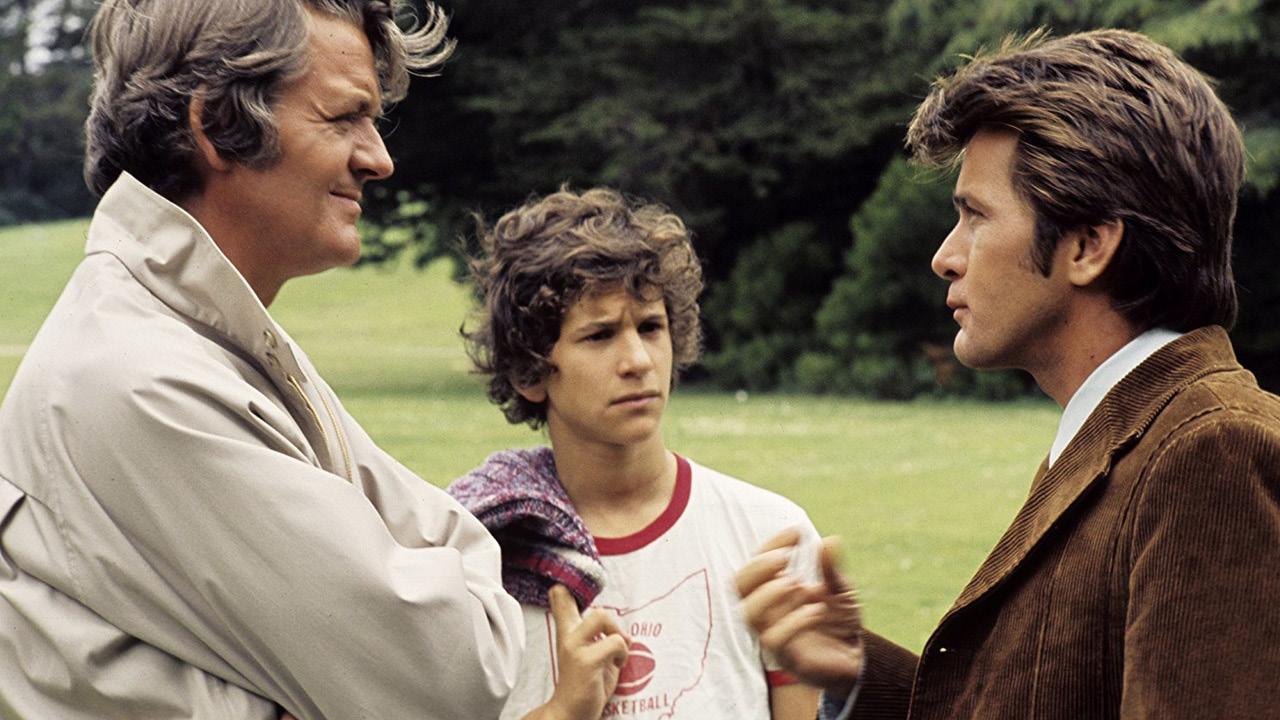
On November 1, 1972, That Certain Summer – a made-forTV movie about a teenage son learning about his divorced father’s homosexuality – aired on ABC. Directed by Lamont Johnson, and written by Richard Levinson and William Link, the movie was watched by almost two million people, and is widely considered the first sympathetic depiction of gay people on American television. A novelization of the film was written by Burton Wohl and hit bookshelves after airing.
The plot turns on Doug Salter (Hal Holbrook), a divorced contractor in his mid-40s who has been living with his homosexual lover, Gary McClain (Martin Sheen), for years now, but has never admitted as much to his 14-year-old son, Nick (Scott Jacoby). Doug has to de-gay his living arrangement when Nick comes for a vacation visit…but Nick wises up to the existence of his father’s lover, and Doug is forced to explain his situation – pathos ensues.
The movie was recognized as being the first network drama to depict a stable, same-sex couple; the first to depict a gay parent; and the first gay-themed show to win an Emmy, with Jacoby winning for his performance.
It was a big deal for that era.
At the time, the New York Times television critic John J. O’Connor observed that the movie “is not ‘about’ homosexuality. It is about personal relationships being affected by the fact of homosexuality. In terms of average television, however, it is something of a major event. The performances throughout the film are excellent,” and the movie “can lay claim to some of the most impressive and sensitive acting ever contributed to television.”
In a 2007 interview with the Dallas Voice, Sheen recalled, “I thought it was wonderful. There was a great deal of freedom in it because it wasn’t about advocating a lifestyle or a sexuality. It was about two people who adored each other, and they weren’t allowed to have a relationship that involved their sexuality.” When asked if he was concerned at the time that the role could affect his career, Sheen responded, “I’d robbed banks and kidnapped children and raped women and murdered people in any number of shows. Now I was going to play a gay guy and that was considered a career ender. Oh, for Christ’s sake! What kind of culture do we live in?”
IN Magazine is grateful to our corporate and community partners who together, through their generous financial and in-kind support, contribute to our mission of celebrating and elevating Canada’s 2SLGBTQI+ communities 365 days a year.










